SPRING/SUMMER 2018
Nashville Interiors




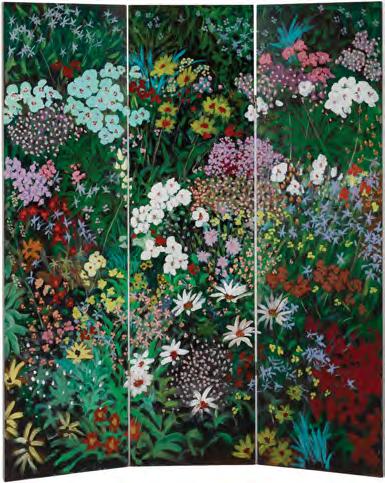
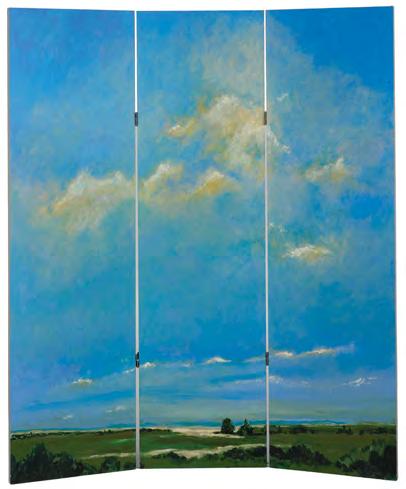
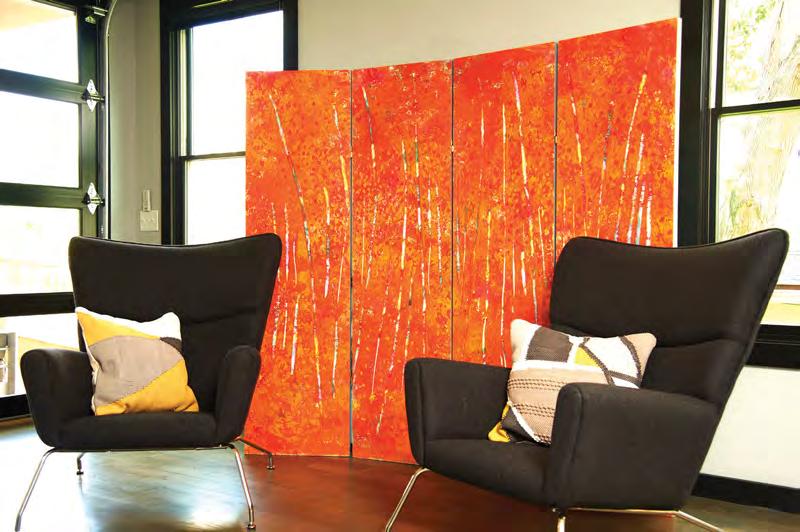























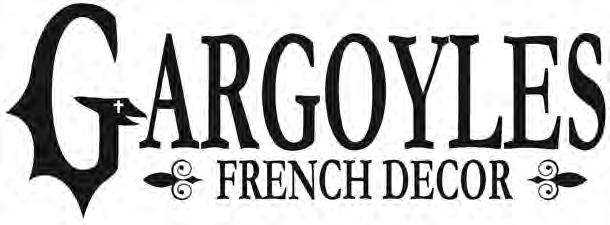



Welcome
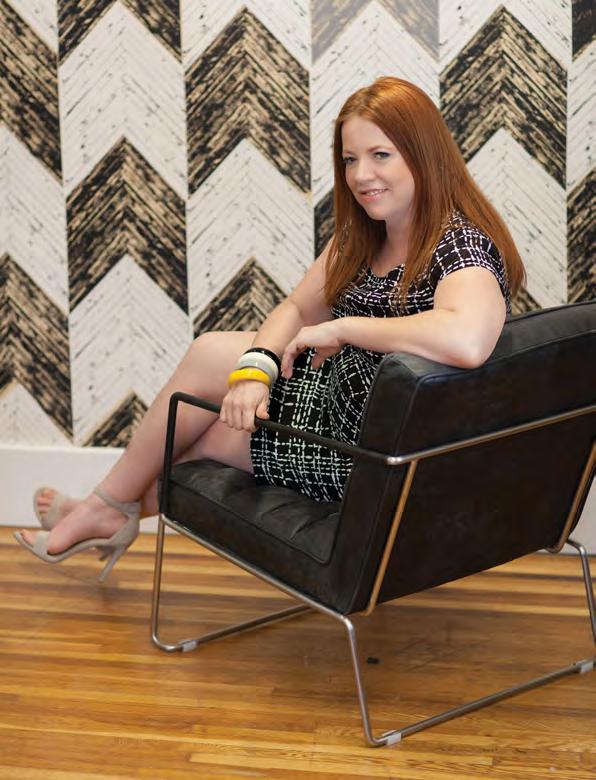
Spring may have taken forever to get to Nashville this year, but now that the snow is gone and the sun is out, we are ready to embrace all the beauty the city has to offer.
And while we battled the winter elements while pulling this issue together, a definite theme emerged: that Nashville right now is a mix of luxury and utility, street and sophistication, old and new. These contrasting themes seem to be exactly how the city is evolving, as the city we once knew becomes the city it is now.
“New” Nashville is just an evolution of the old one — like a rebellious teenager who grows up to be a force to be reckoned with. Like street artists Troy Duff, Nate Brown and Bryan Deese. All alums of Hillsboro High School, their undercover graffiti beginnings evolved into the creation of large-scale murals for some of the area’s biggest names and places (The 505, Woolworth’s on 5th, The Country Music Hall of Fame and Museum) and fine-art pieces in homes and galleries across
Middle Tennessee and beyond. Public art has become a colorful and graphic presence in Nashville, and that style is being embraced in private homes.
Another artist who has evolved with Nashville is Jim Sherraden, who has been associated with Hatch Show Print since 1984. As a cultural archivist, Sherraden revived the print history that was packed away and turned Hatch into a worldwide graphic design icon — and he isn’t done. In 2005 he began carving block prints, and now he creates paper quilts by cutting up his already-beautiful prints, then mixing and matching the pieces on single and multi-dimensional surfaces. You will be able to see the intricate results at his show in August at Haley Gallery.
Some other longtime local creatives helping to preserve Nashville’s past while embracing the “new and now” make up the team behind Noelle. The 13-story Printers Alley hotel was brought back to life by Nick Dryden (DAAD), Benji Peck (Peck & Co.), Libby Callaway (The Callaway), Andy Mumma (Barista Parlor) and Bryce McCloud (Isle of Printing). Noelle is owned by Rockbridge and operated by Makeready, a company that operates hotel, restaurant and retail brands. Together they brought together the local team to reinvigorate the historic hotel that was first opened in 1930 by the prominent Noel family of Nashville.
Of course it wouldn’t be Nashville Interiors if we didn’t show off the spaces inhabited by some of our most interesting residents, too. Singer and model Bebe Buell’s Green Hills-area home with husband, producer and musician Jim Wallerstein, is filled with jaw-dropping mementos that range from art gifted by Mick Jagger to family photos that are generations old. Tennessee Titans general manager Jon Robinson and his wife, Jaimie, showed off their Governor’s Club abode — just right for family dinners with their daughters and entertaining the players and their wives. And Grammy-winner Keb’ Mo’, who is performing at this year’s Pilgrimage Festival, let us see the spaces that inspire his music and life with wife, Robbie Brooks Moore.
We couldn’t be more excited to highlight just a few of the people and places that make Nashville beautiful in this issue of Nashville Interiors.
Hollie Deese Publisher

NASHVILLEINTERIORS.COM Visit

Be sure to check out the online edition of Nashville Interiors regularly for fresh content between issues, profiles, photos we couldn’t fit on our pages, style tips and trends, and a heads-up about events and happenings for the design-minded in town.
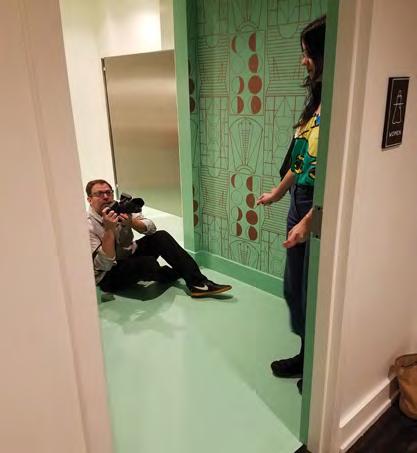
ON THE COVER
The Você development on Eddy Arnold’s former land features tree-filled lots. On the cover is an outstanding Você build from Castle Homes, designed by C. Kevin Coffey. See our Fall 2017 edition or read online at nashvilleinteriors.com for more about the neighborhood.
SOCIAL
Follow Nashville Interiors on social media for updates when new content is posted online and for lots of behind-the-scenes peeks from photo shoots and insider events.
Nashville Interiors
SPRING 2018
PUBLISHER | SENIOR EDITOR
Hollie Deese
SALES DIRECTOR
Pam Harper
ART DIRECTOR
Karen Cronin, Cronin Creative
ADVERTISING DESIGN AND SALES
Jennifer Rapp
COPY EDITOR
Jennifer Goode Stevens, GoodeEdits.com
WEB | SOCIAL MEDIA
Nancy McNulty, Forest Home Media
CONTRIBUTING PHOTOGRAPHERS
Heather Byrd
Connie Chornuk
Gary Clark
Emily Dorio
Gabe Ford
Marcelle Guilbeau
Danielle Kirk
Jessica Keener
Pam Monaghan
Sanford Myers
Janin Otwell
Marty Paoletta
Heidi Ross
Patrick Sheehan
Reeves Smith Reagen Taylor
Rachel Tenpenny
MAKEUP
Justine Sylvie
Kelly Campbell Valente
PRINTING
Parris Printing, Nashville, TN
Nashville Interiors is the premier building and design guide of Middle Tennessee. We feature regional master artisans, designers, architects, builders, artists, collectors and retailers, and we bring you news of the area’s trends in building, design and development. We also showcase the inspiring spaces of our area’s eclectic group of residents.
Nashville Interiors is published by Deese Media LLC. Nashville Interiors has been continuously in print since 2000.

All editorial and photographic content is the sole property of Deese Media LLC and is not to be reproduced in part or in whole without the express written permission of the publisher.
Nashville Interiors is available at select locations and events. For information on where to find a copy, visit the website or email hollie@nashvilleinteriors.com.
To receive an advertising rate sheet contact Pam Harper, pam@nashvilleinteriors.com.
To request content reprints, suggest story ideas or notify with website or social media issues, contact Hollie Deese, hollie@nashvilleinteriors.com.
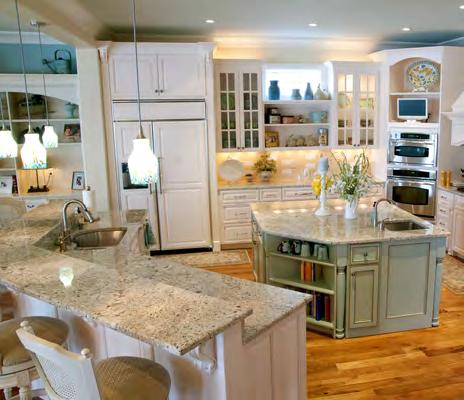
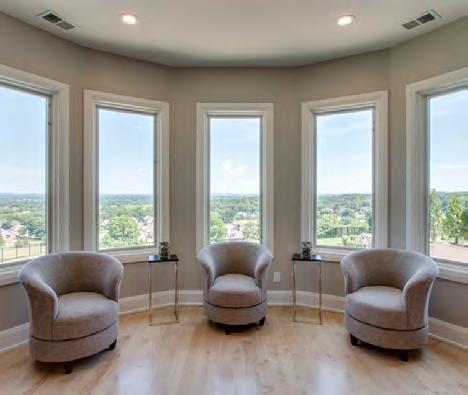
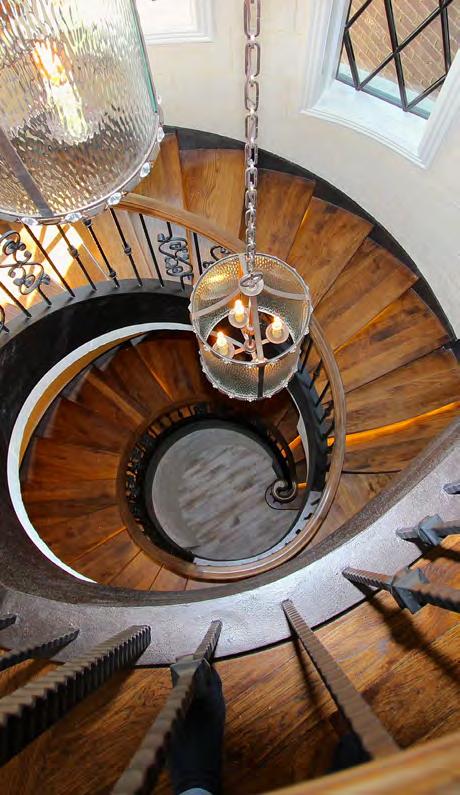


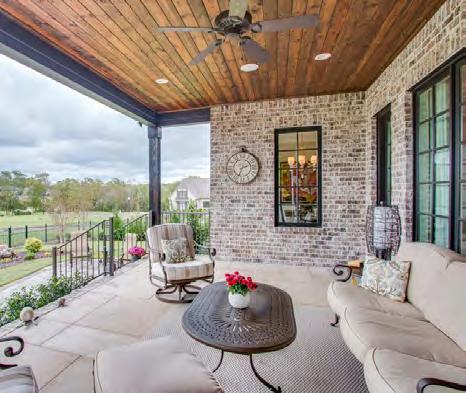
CONTENTS Nashville Interiors


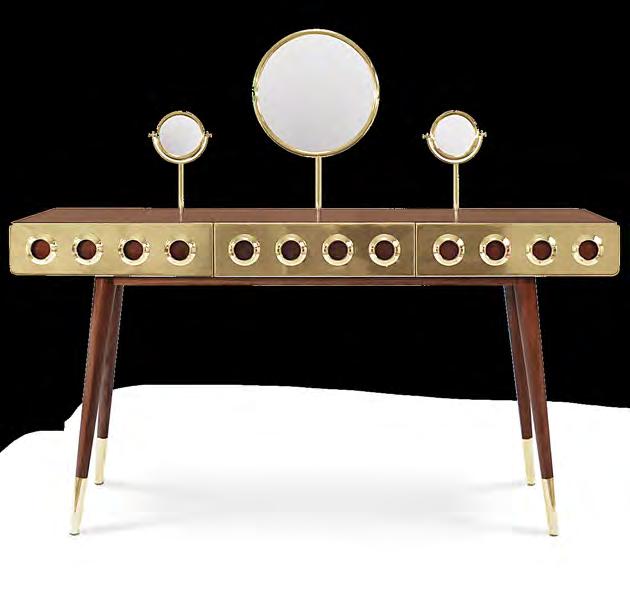

All
Go inside the home of Tennessee Titans GM Jon Robinson and his wife, Jaimie, as they get used to life in Middle Tennessee.
32 INSPIRING SPACES: KEB’ MO’
The Grammy winner and his wife have a home filled with art and creativity — just the place for him to write music and relax.
Friends
on
12SOUTH TRANSFORMATION
Jessica Davis of JL Designs helps a homeowner with a changing lifestyle upgrade his home in a way that most matches him now.
50 INSPIRING SPACES: SAVANNAH YARBOROUGH
Leather jacket designer of AtelierSavas has an impossibly cool and laid-back loft off Eighth Avenue that also happens to be right above her edgy storefront.
54 INSPIRING SPACES: BEBE BUELL
Singer, model and movie-star mom surrounds herself with wonderful collections handed down from her mom and with mementos of a rock-star lifestyle.

Nashville’s Clothier since 1855
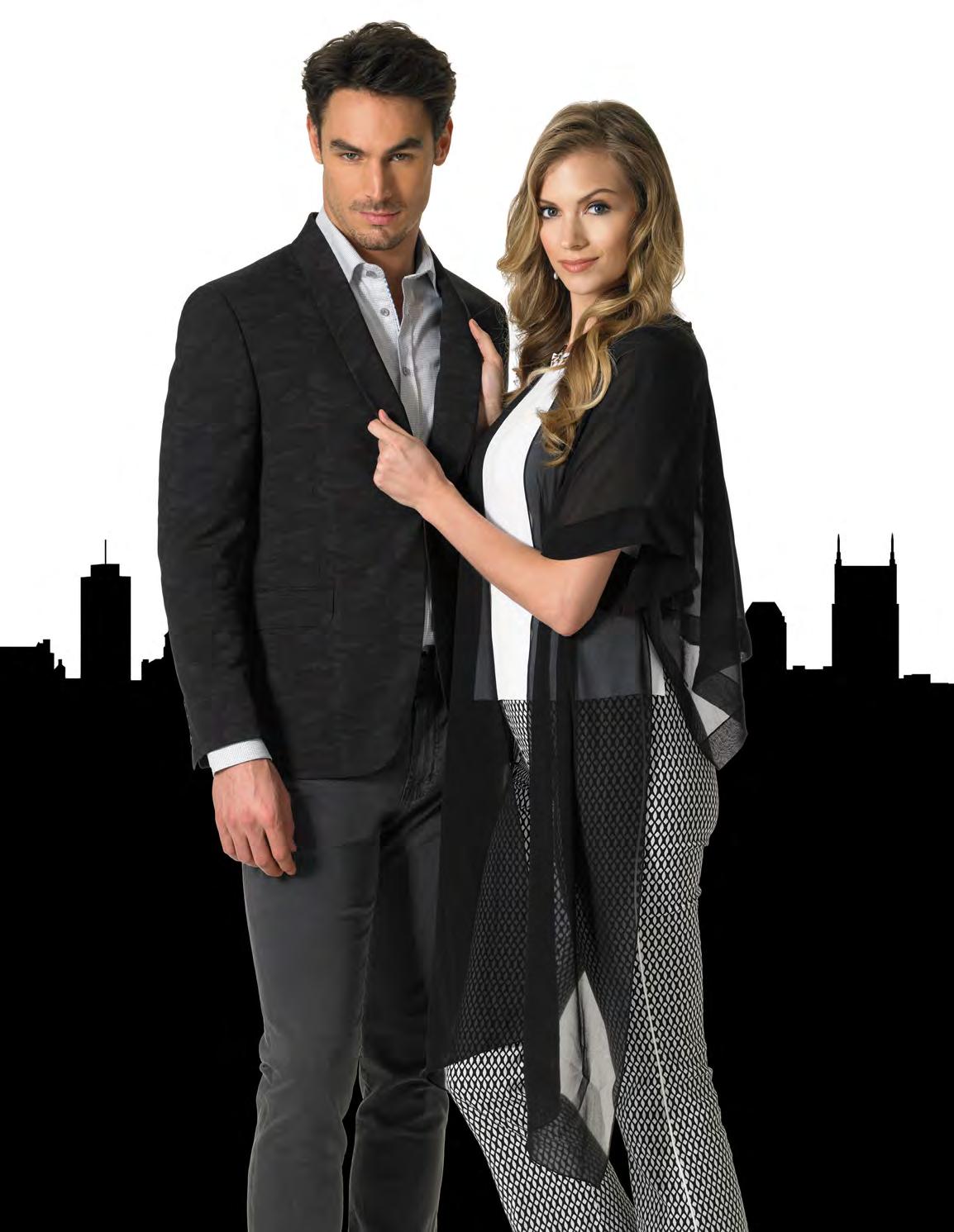
CONTENTS Nashville Interiors

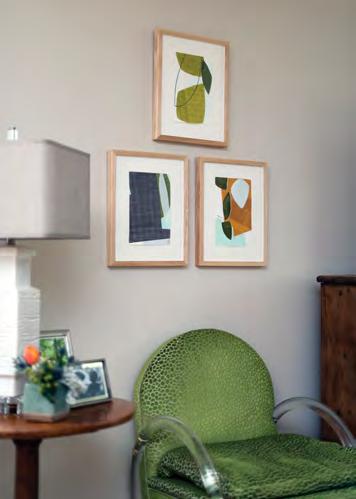
58 DESIGNER SPOTLIGHT: TIM RIFFLE
Floral designer shares how he pivoted from music to making beautiful arrangements after moving to Middle Tennessee.
64 FARM TO HOME
A third-generation farmer and her father work together to create beautiful, heritage-inspired sheets from cotton they grow and gin themselves at Red Land Cotton.
70 THE GOLDEN AGE
Find out how five longtime Nashville creatives were able to collaborate on the design and focus of one of Boutique Row’s most fabulous hotel additions, Noelle.
80 FINISHING TOUCH
A modern renovation is only complete once the traditional front door is swapped for an architecturally inspired upgrade.
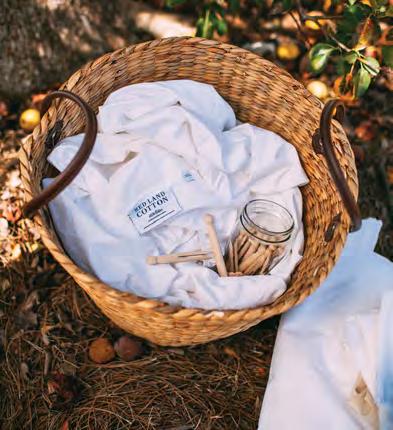
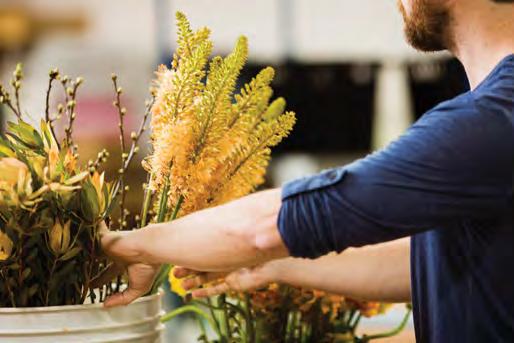
84 ARTCLECTIC INSPIRATION
Designer McLean Barbieri shares special pieces she has bought over the years from the longtime USN school fundraiser.
88 ARTIST SPOTLIGHT: JIM SHERRADEN
Longtime Hatch Show Print archivist and master printmaker combines quilting with woodcut block prints to make creations uniquely his own.
92 GRAFFITI GOES INSIDE
Troy Duff, Bryan Deese and Nate Brown have all evolved from Hillsboro High School teens with cans of spray paint to respected muralists and fine artists.

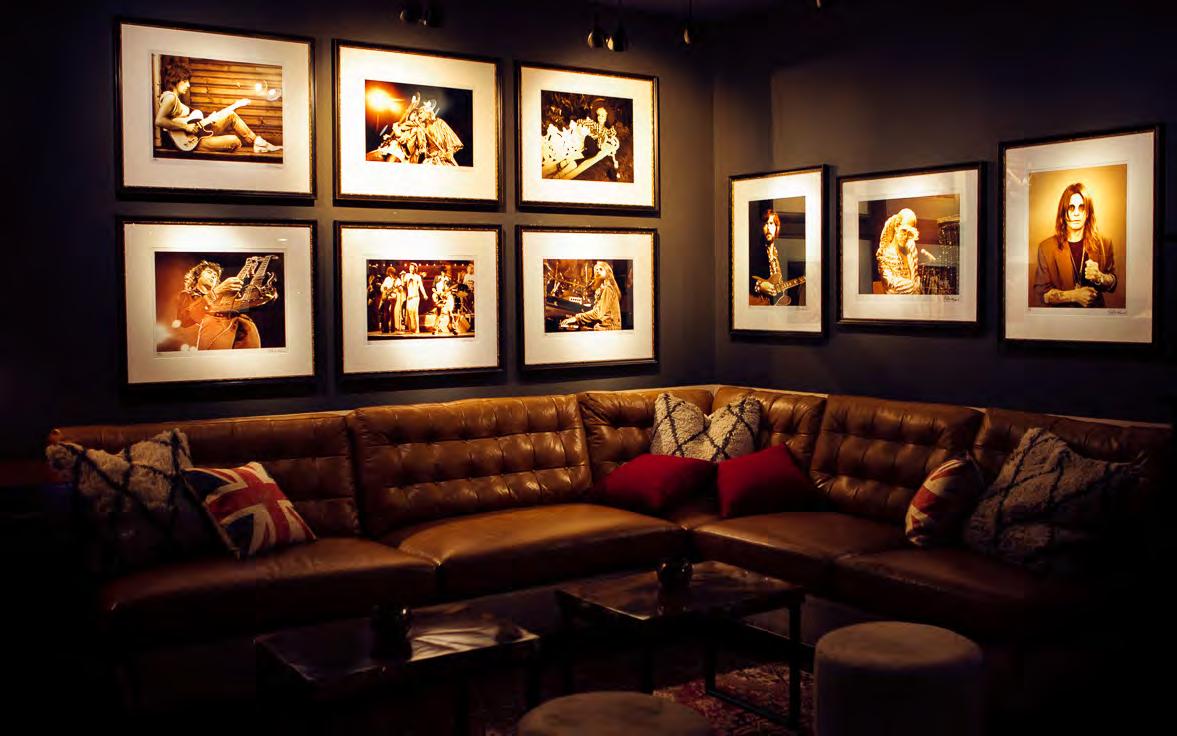
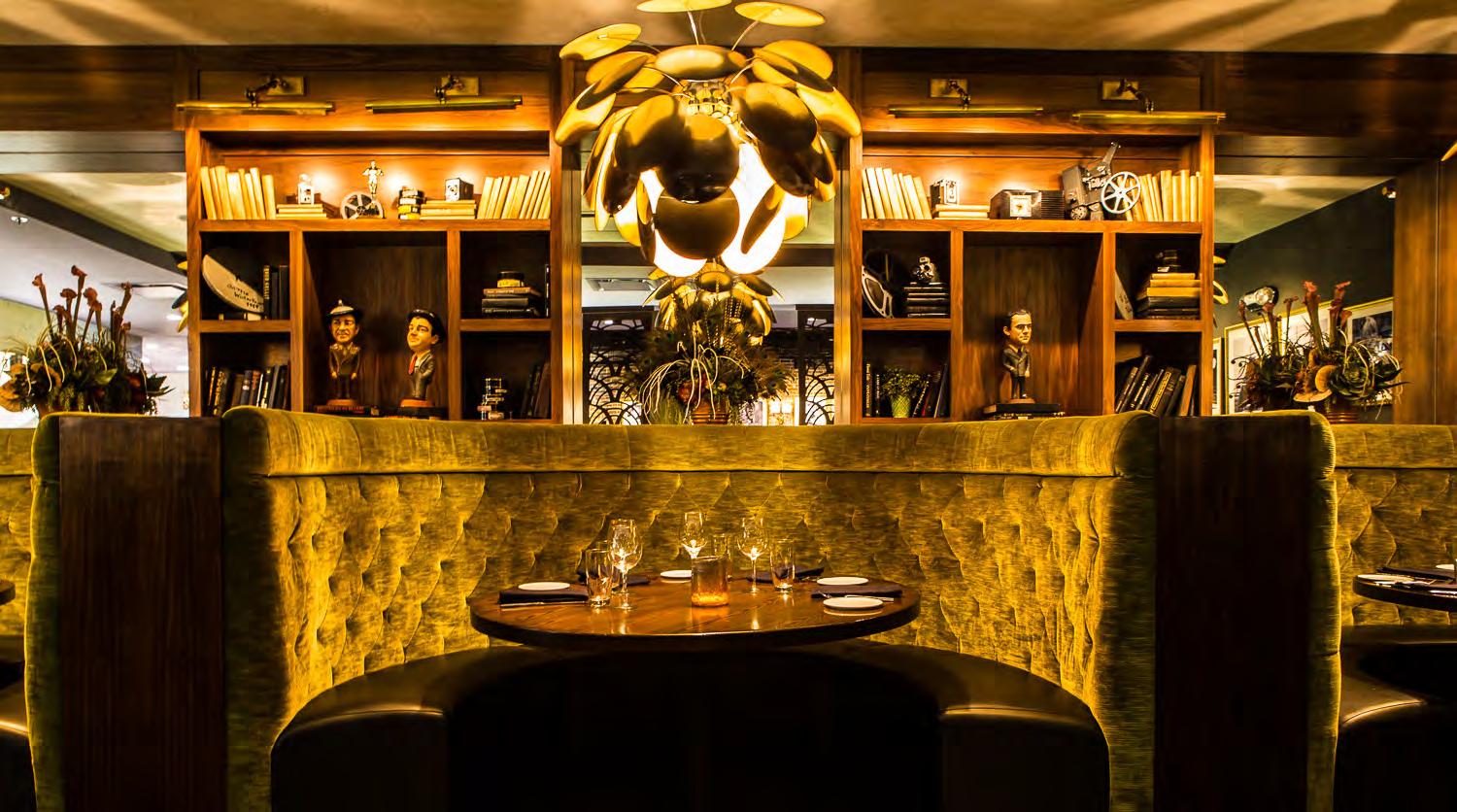

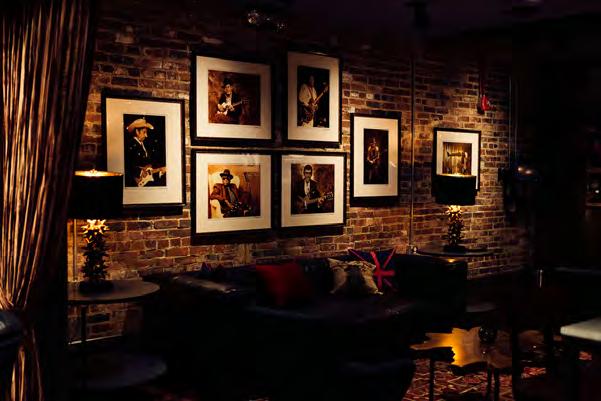


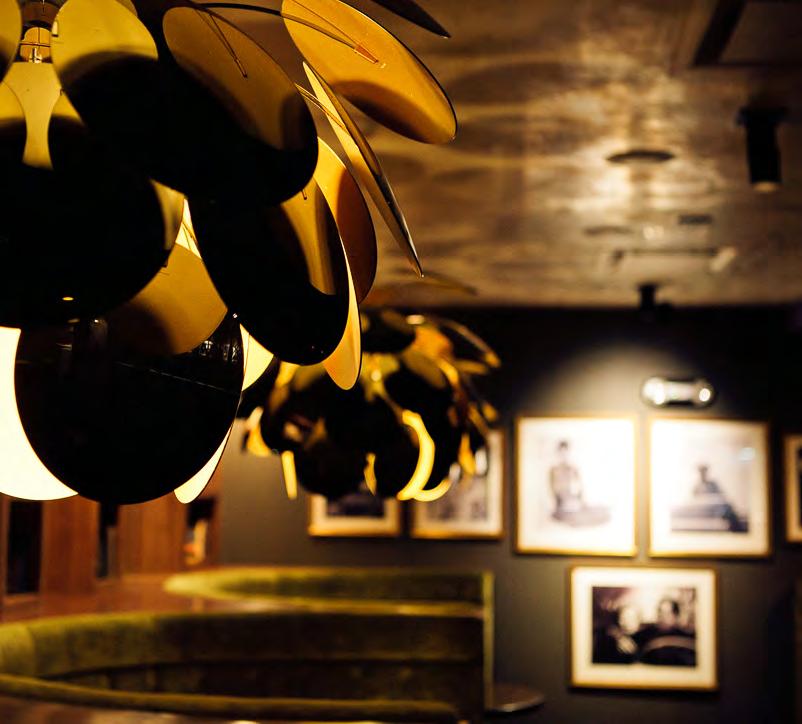
SPRING’S FINEST THINGS
A SWITCH IN SEASONS MEANS THE CHANCE TO DO SOME SHOPPING.
THESE ARE A FEW THINGS WE HAVE ADDED TO OUR MUST-GET LIST.
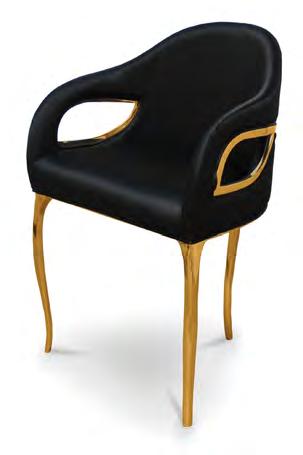
The Koket Chandra dining chair is bold and daring all wrapped up in vintage glam. Polished brass bands delicately bind the chair, highlighting the sculpted fluidity of the Satina lux upholstery. Price upon request at bykoket.com.
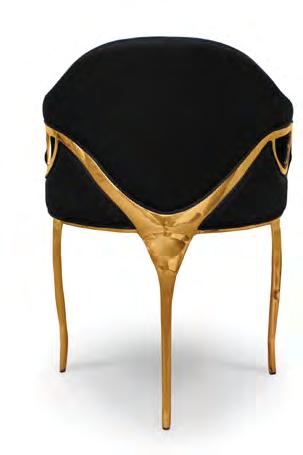

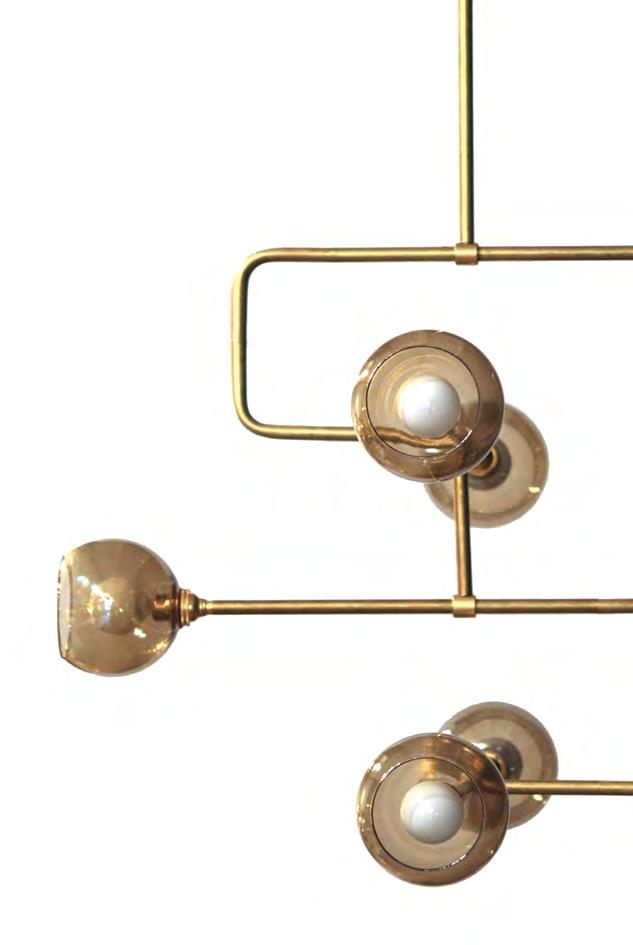
American potter and designer Jonathan Adler is a master at making the most basic furniture feel special, like the Harlequin Credenza ($3,950). The kaleidoscope hues and ivory case tipped with brass edging, perched on Adler’s futuristic interpretation of a hairpin leg, is the exact right mix of modern and mid-century.
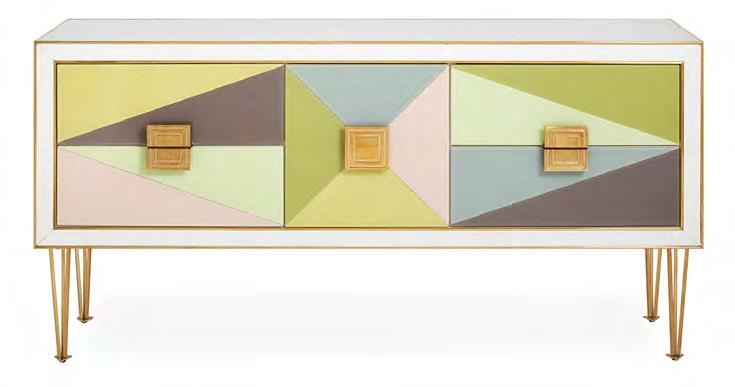
Spring into fresh home decor and luxury bedding with Legacy Linens, available at Ashley Rohe Home, 4239 Harding Pike. With a bright and inviting style — and carefully curated home decor items — Ashley Rohe is ready to refresh your space or design your entire home, tailored to your timeline and budget. Call 615.383.5515 for more information.
Chosen, 2203 Bandywood Drive, introduces jewelry line Sofie Cawood to Nashville. The Armorial bracelet looks amazing just sitting out on display and is included in the debut collection ($575-$5,000) that includes sterling silver, 14K and 18K gold. Custom orders are available. Call 615.818.0886 for more information.


The Stacked Triple Circuit Chandelier with smoke glass is designed by Michele Varian and made in her NYC studio for her Circuit Lighting Collection — so named because of its visual similarity to the patterning on an old-school circuit board. It incorporates the minimal workings of mid-century modern functionality in design. $2,600 for brass at michelevarian.com.
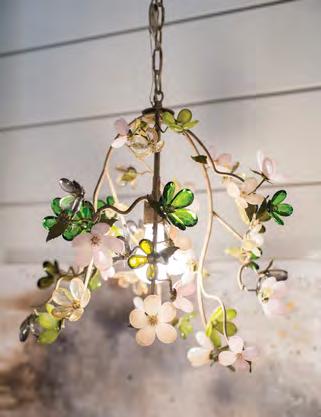
This delicate chandelier ($1,400) is one of many styles available at MarketPlace Interiors, 2225 Bandywood Drive, and is fully customizable in every color you could imagine. It’s just the right size for a powder bath, bedroom or accent lighting for any place you want to make more memorable. Call 615.942.6055 for more information.

Kristy Cohn of Kristy Cohn Design oversees every facet of the design process, creating sophisticated yet still livable environments for commercial and residential properties. Her design extends to her love of antiques and art as a dealer of special pieces. For more information, visit kristycohn.com. Photo by Solomon Davis.

Getting ready goes next-level with the Monocles dressing table, $9,470 from Maison Valentina. With a mid-century feel, it’s constructed of solid walnut and offers three front drawers produced in gold-plated brass. Supported by atomic legs, the three bullseye mirrors have brass rims — the smaller ones rotate vertically for accessing all the angles.

Nashville designer Ray Booth’s new book, Evocative Interiors (Rizzoli, $55), showcases his love of glass, masonry and more. Trained as an architect, Booth is a master of modern elegance and distinctively elegant spaces that still offer a sense of place and history, just like in his own residence, Traveler’s Ridge.
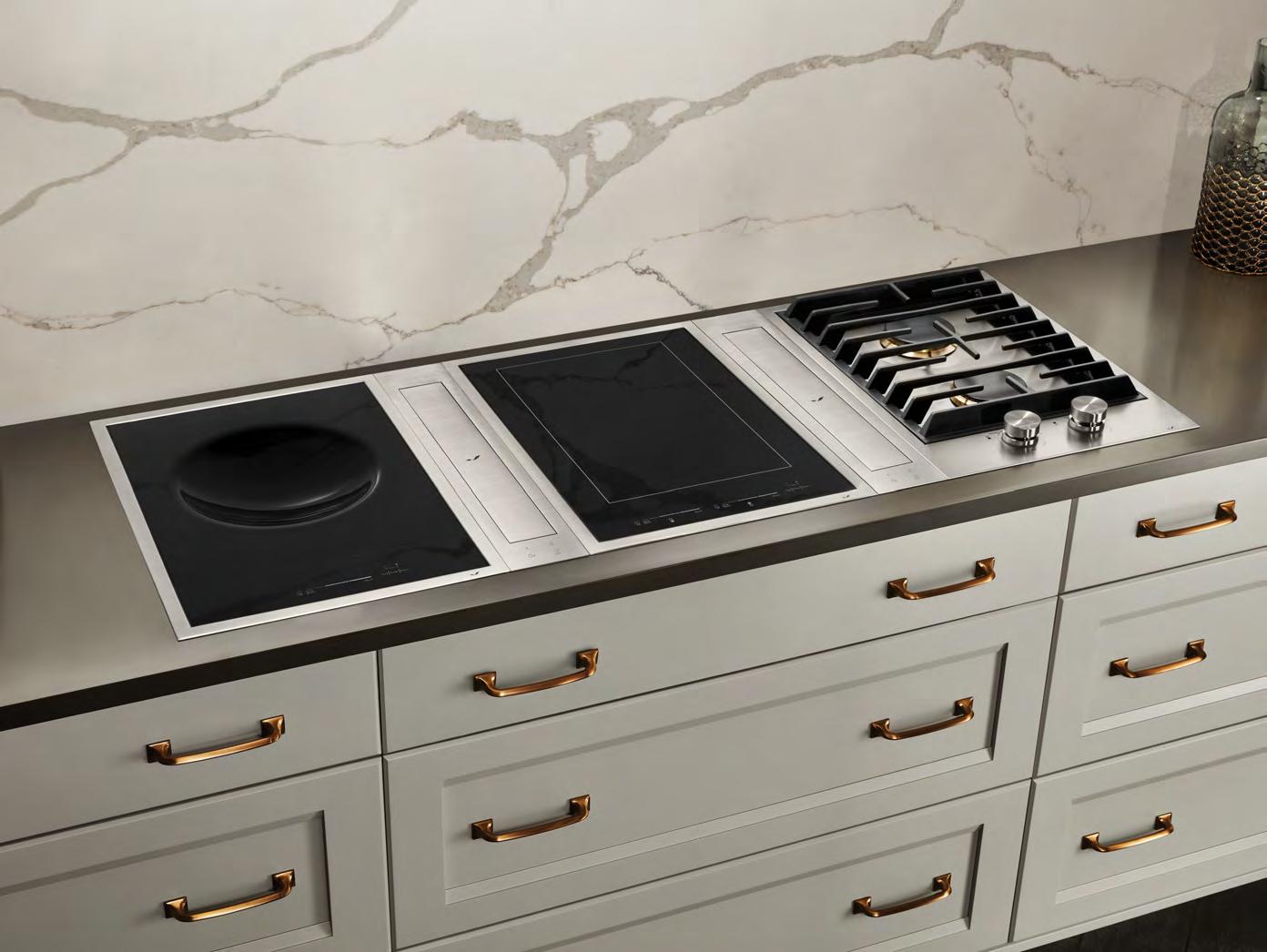

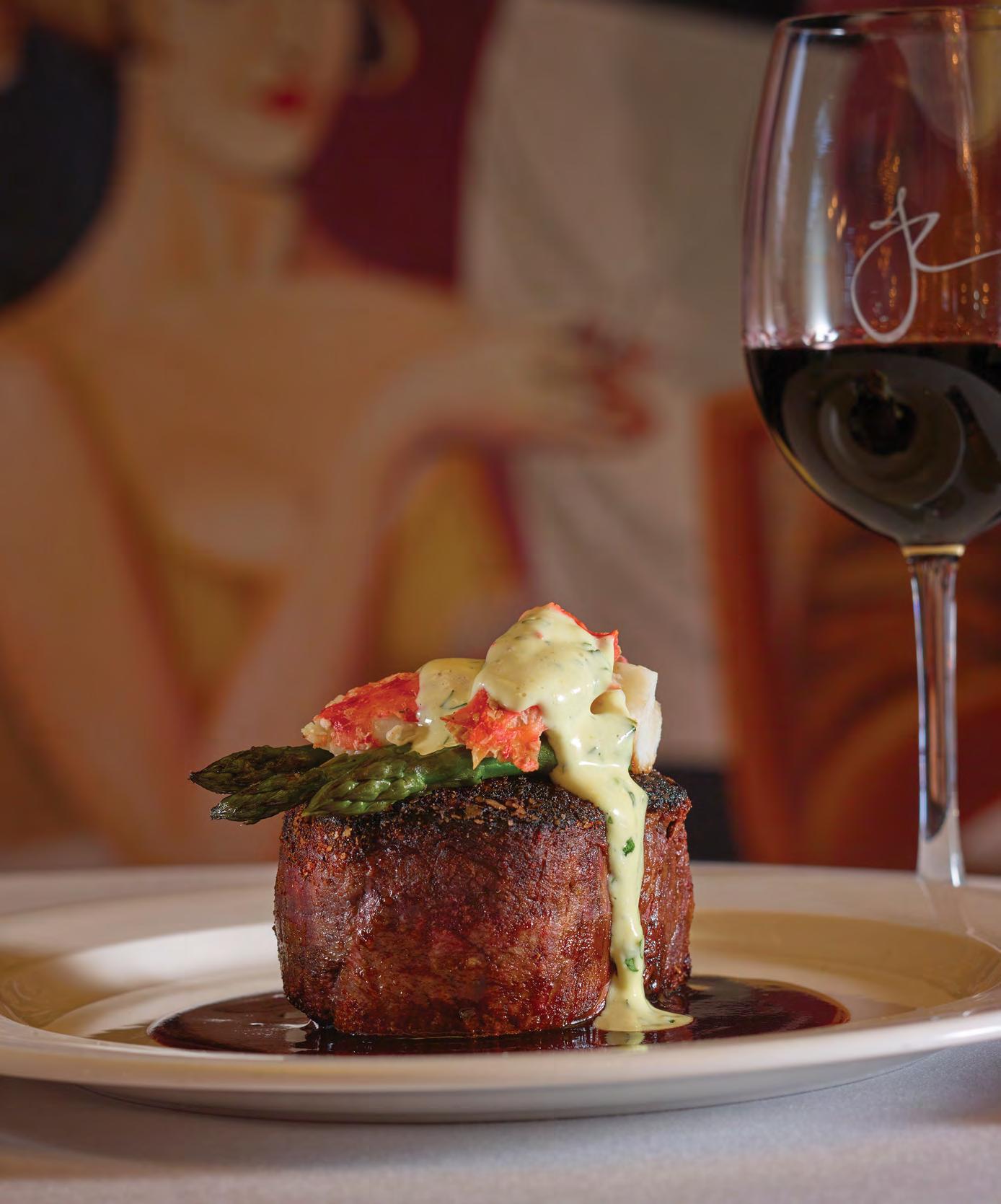
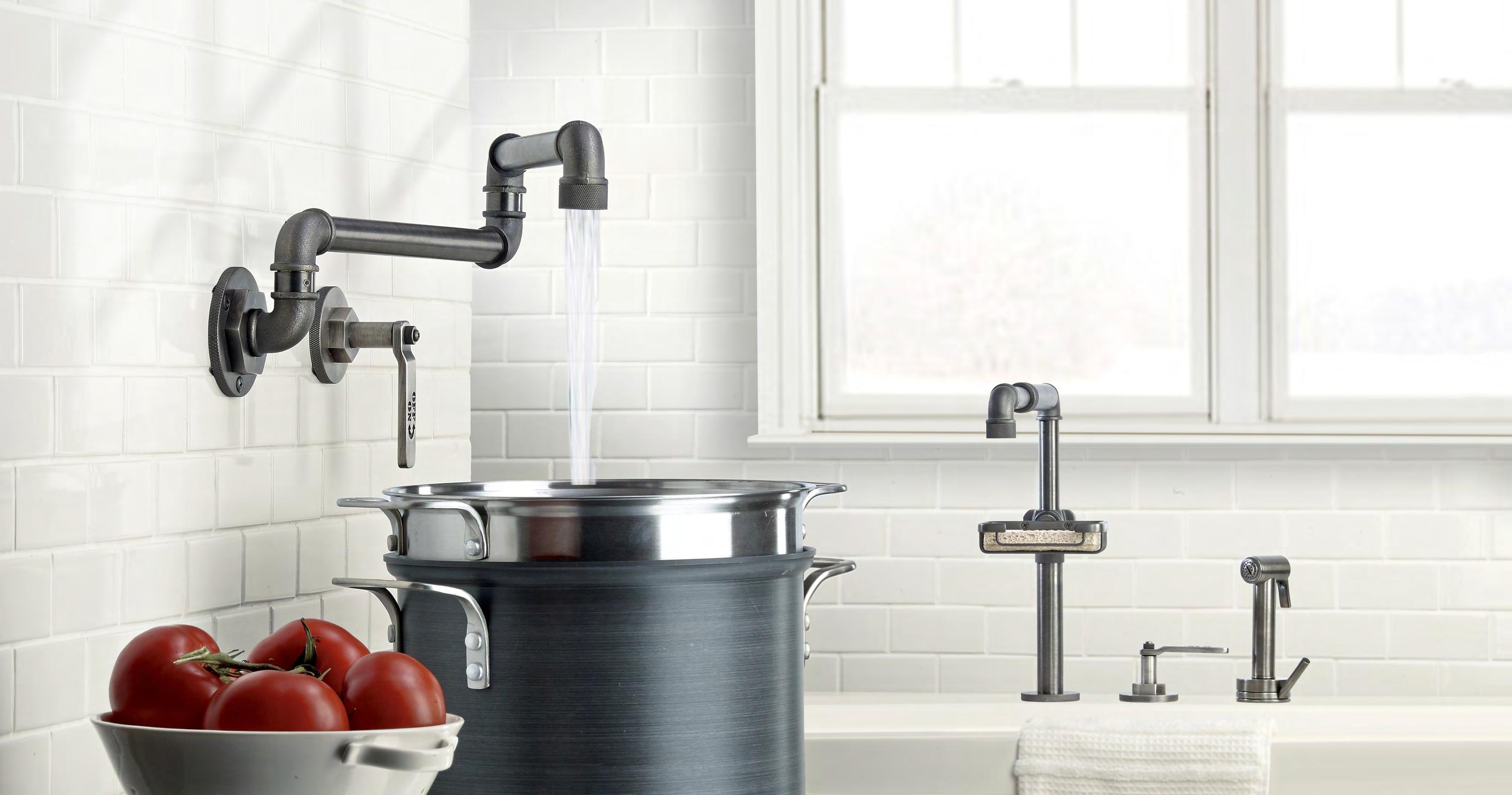



Meet the Robinsons
LIFE AT HOME WITH THE TENNESSEE TITANS
GM AND HIS FAMILY
STORY BY HOLLIE DEESE PHOTOGRAPHY BY SANFORD MYERS
When Jon Robinson met Jaimie Bivens at Nicholls State University in south Louisiana, it was 1999. She was a 19-year old student, and he was a 24-year-old football coach.
“I was a bartender at the local family sports bar where all the coaches and everybody hung out,” she says.
The two began dating, and when it was clear things were getting serious he wanted to make sure she was okay with the plans he had for his future — possibly becoming a head coach someday. It would mean not only leaving her hometown, but possibly her moving all the time.
The Louisiana native was all-in on Jon and wherever his professional sports career would take them, and they got married in 2002. Just two months later he was tapped to be the local scout for the New England Patriots, and so began their crazy journey.
Jon spent 12 seasons with the Patriots, working his way up from area and regional scout to director of college scouting — a promotion that required the family to move to Boston in 2009. In 2013 he joined the Tampa Bay Buccaneers overseeing all areas of the scouting department, both college and pro, in addition to free-agency prep and evaluating players in the NFL.
Then two years ago they moved again, leaving Tampa for Tennessee when Jon was named general manager of the Titans. A year later he was promoted to executive vice president and general manager. Since their arrival they have been settling into life at the Governor’s Club in Williamson County — a welcome respite, especially during football season.

The Robinsons are now a family of six, with two daughters, Taylor Brooke and Bailey Rae, and two Bouvier des Flanders dogs — Kai, and Dexter, just 4 months old. Jon is a native of Union City, Tennessee, so the move brought him and his girls closer to his roots.
“This is the closest we ever have been to family since we left Louisiana,” Jaimie says. “And Nashville itself, the city, it’s like Tampa. It’s small and quaint, but it has so much to offer. It’s really so awesome.”
OPEN AND INVITING

When choosing their home, they needed a space to accommodate all aspects of their life — family and kids and relaxation, but also hosting high-profile events.
“We like to entertain because of Jon’s job, and with our friends,” she says. “We’re kind of homebodies like that. We’d rather entertain people here. So the fact that they
had the kitchen downstairs and with the pool — in the summers, that’s where we live.”
Open the doors off the downstairs bar to the pool, and the breeze that blows through is practically tropical. “It’s like we’re in a new part of the country,” Jaimie says. The girls love to swim in the summers, too, and Jaimie
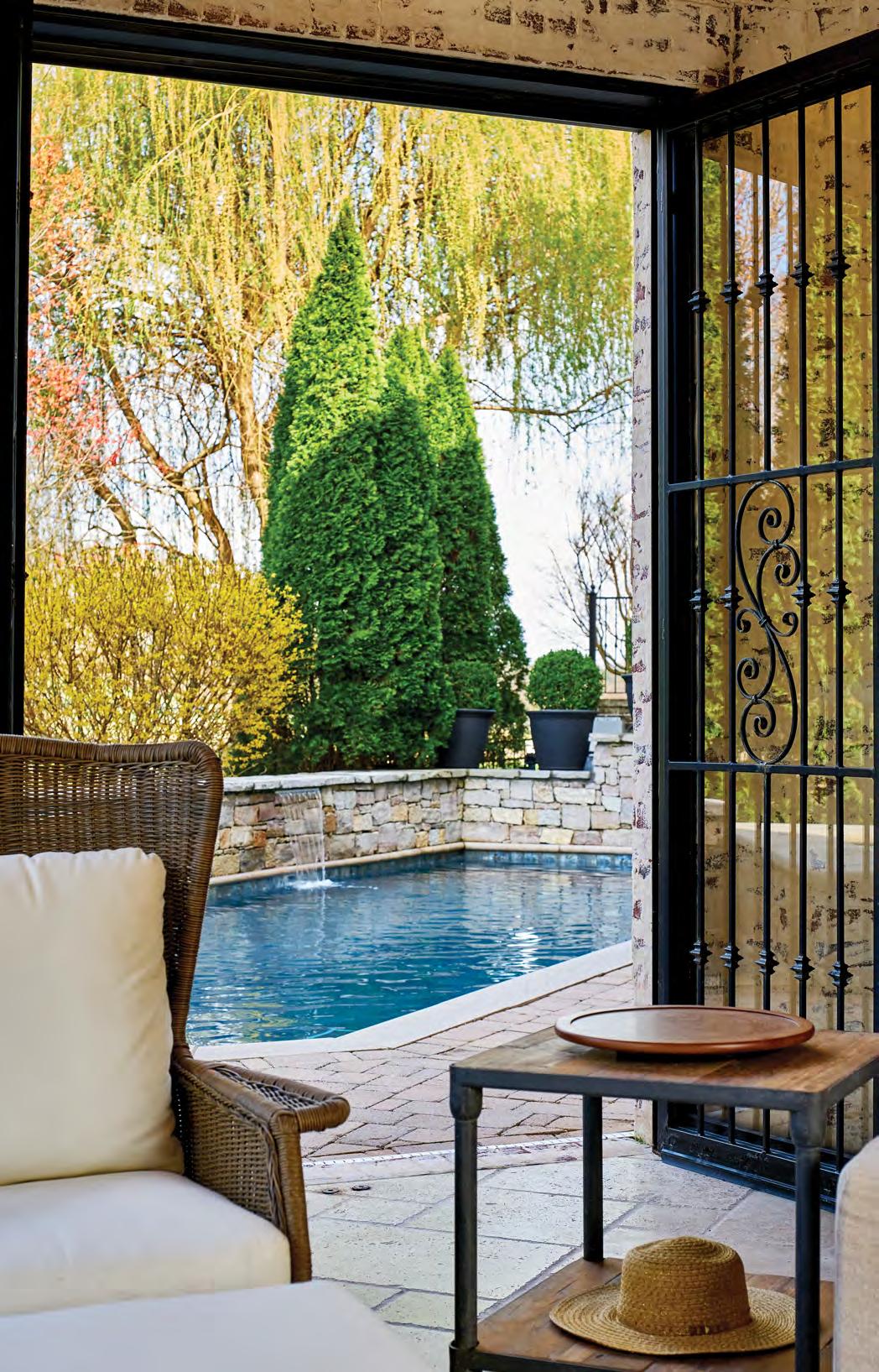
Chandeliers that were already in the home were simply moved to different rooms in order to make them work like the one in the front office.
However, when Jaimie saw the beaded number that now hangs over their custom Rail Yard Studios table on Instagram, she had to have it.

“It kind of feels like a resort. There’s a lot of different vibes with different areas of the house.” – Jaimie Robinson
and Jon are happy to just hang out nearby.
“That’s our happy place, to be down there and just relaxing, watching the kids swim,” she says.
Also downstairs is a game room with pool table, a separate area for video-game play, and a media room with a custom wine cellar by Robert Hendrick of Rail Yard Studios. Along the walls where they watch movies are posters from every city they have lived in together — Boston, Tampa, Nashville.
“If we want to do family night, we can go down to the theater and escape,” Jon says. “You’re at home, but it feels like you’re at the theater. If you want the outdoor space, you can kind of slide out into that outdoor living area. It kind of feels like a resort. There’s a lot of different vibes with different areas of the house.”
Jon golfs when he has time, and the girls and Jaimie will sometimes tag along. They go to the clubhouse for Sunday brunch and will even pick up dinner there to take home on occasion.
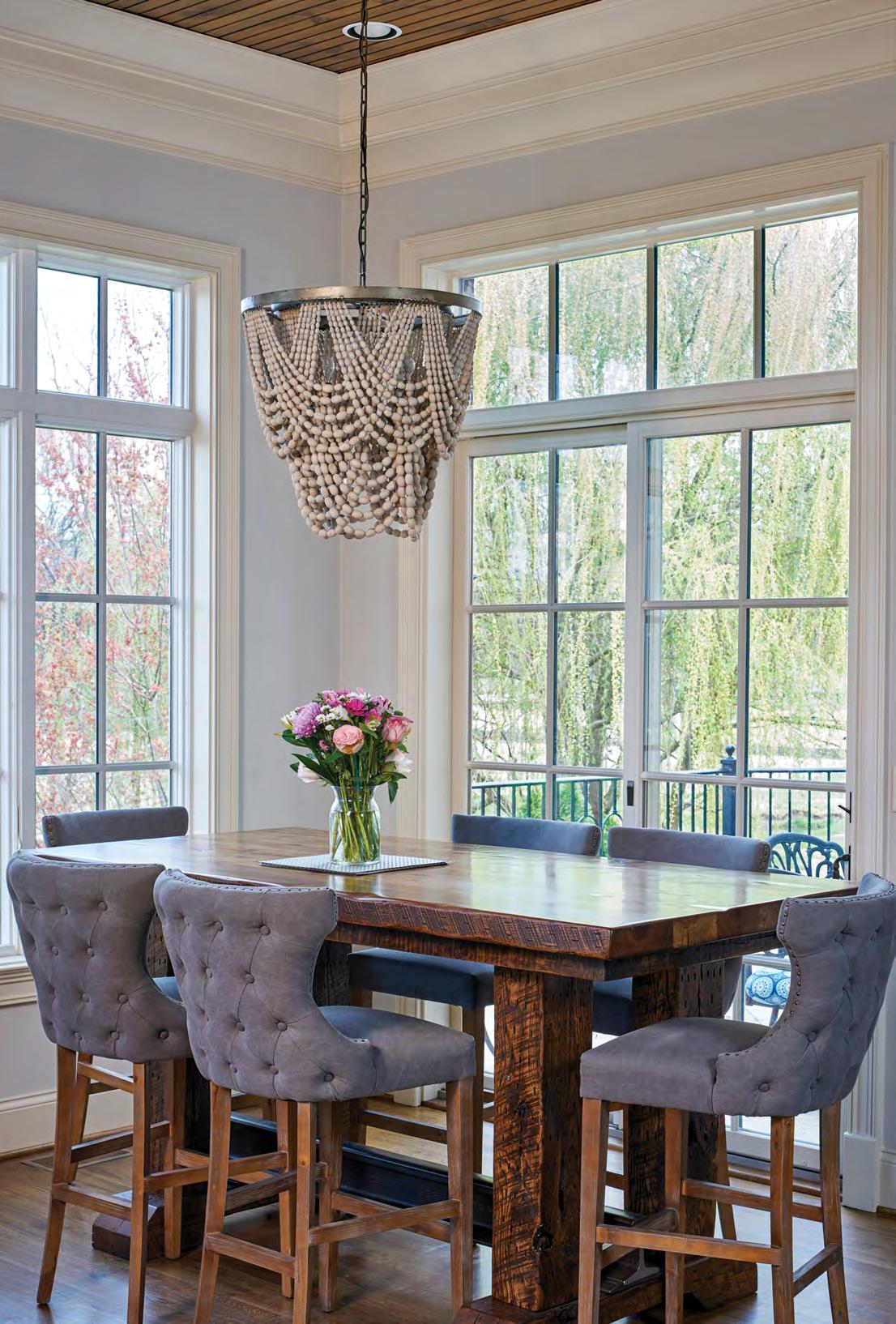
“We just love the neighborhood,” she says.
But the kitchen is the hub of the home, where purses are dropped, shoes are kicked off and homework is spread out over the expansive island. It also becomes a de facto hang for Jaimie’s friends and the monthly get-together she hosts for the players’ wives.
“This is where we live,” Jaimie says. “Anytime I look for a house, I look at the kitchen first. We’re always here. We walk in the house, and this is where the clutter will be.”
The kitchen opens to the living area, and signs of life are everywhere — from the dog toys to the four-leaf clover one of the girls plucked outside on St. Patrick’s Day. The gray walls blend with the neutrals of the kitchen.
“I think that the way that it’s laid out, we obviously spend most of our time up here in the family room,” Jon says. “When the weather is nice, the girls can sit here and watch TV, and Jaimie and I can slip out onto this little porch and have a glass of wine, smoke a cigar.”
Even the formal sitting area has been getting some love as Jaimie’s friends have encouraged her to move out of the kitchen to just relax and sit.
“To be honest, I never really had a formal living room, so I never went in there,” she says. “My girlfriends
would come over, and we were sitting here one night. They were like, ‘Why are we sitting in here? Let’s go in there.’ Whenever they come over, we tend to go in there now and have our wine.”
MIXING OLD PIECES WITH NEW STANDOUTS
Kara Blalock of ReFresh Home helped the Robinsons with their family-friendly design, using a lot of their own pieces — even if it meant transforming them to work in the new space. She also reused a lot of the home’s existing light fixtures simply by swapping rooms so the styles and sizes better matched the space.
“We did a lot of repainting old cherry furniture that wasn’t necessarily the finish they wanted, but still were good, functional pieces — including her big dining room china cabinet,” Blalock says. “She loved it and loved that we could reuse and not have to buy something new.”
And of course they took the kids and dogs into account, too, avoiding expensive pieces in delicate fabrics that wouldn’t stand a chance after a few years of family life.
“We definitely tried to use fabrics that hide dirt or that
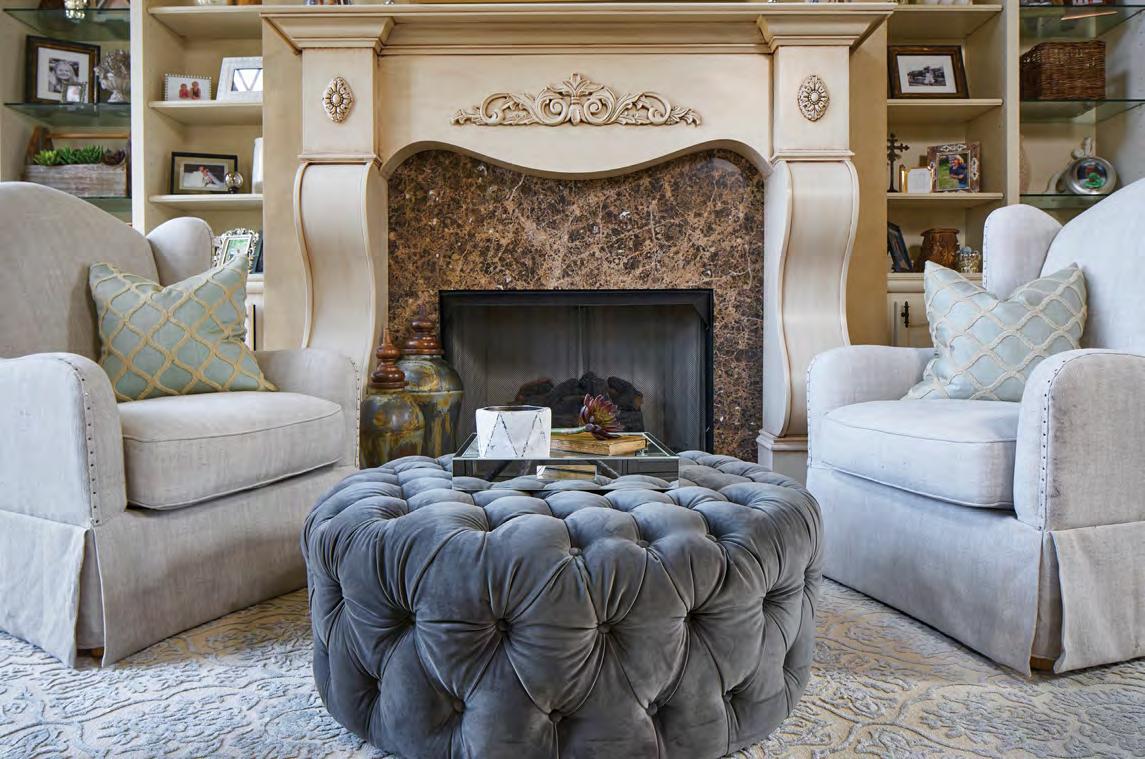
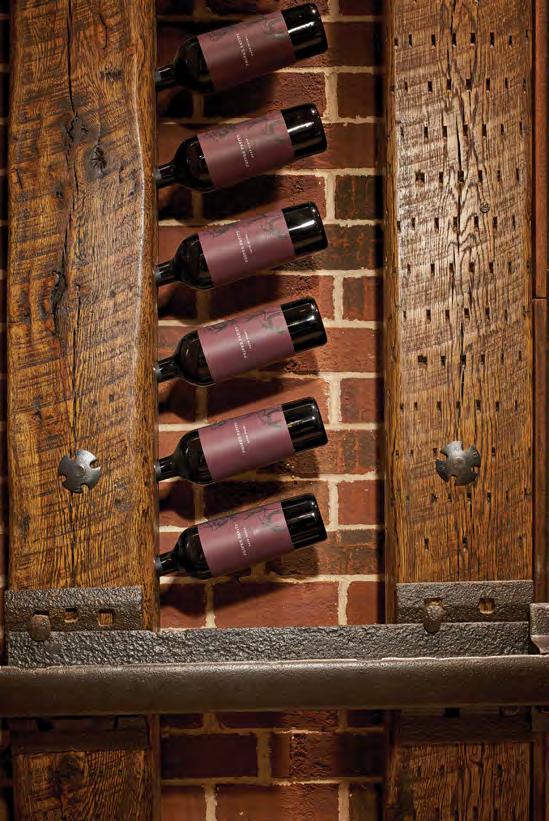
are easily cleaned,” Blalock says. “I even used slip covers on the bar stools in the kitchen so if they were ruined we could always just replace those.”
That doesn’t mean they shied away from some seriously standout pieces, like a dramatic light fixture Jaimie saw on ReFresh’s Instagram page.
“It’s my favorite,” she says.
And just underneath is one of Jon’s favorites, a custom table, also made by Hendrick of Rail Yard. Looking for something that was pub height, Jon found Hendrick’s work online and clicked on it, not even realizing Hendrick was in Nashville, too, at first.
“We went through a lot of the emails back and forth on this thing, and he nailed it,” Jon says.
“We wanted a little bit more elbow room. And it’s perfect. After he did this, I asked if he had ever done a wine cellar. We just started looking at some ideas and came up with something. He mocked up a design. I tweaked it a little bit. He nailed that one, too.”
Of course, Jon only has time to work on design projects during the off season.
“Here’s a little secret about him that nobody would know,” Jaimie says of her husband. “He has an eye for interior design, and he’s very good. Whenever I go to do something, I always ask for his opinion first. I trust him.” NI




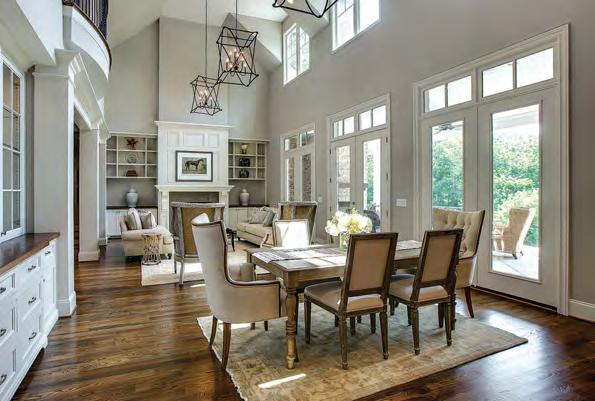





Inspiring Spaces
KEB’ MO’
MIXING FAMILY AND MUSIC AT HOME IN MIDDLE TENNESSEE
obbie Brooks Moore was selling cell phones at an AT&T store in LA when Kevin Moore — blues musician Keb’ Mo’ — came in with his broken phone. He was tall and handsome, and they immediately hit it off; the fact that she was also a musician helped connect them even more.

They began building their life together in California — getting married, having son, Carter Mandela, buying a house. But they moved into their Middle Tennessee home eight years ago, found on a trip when Kevin was playing a show at the Ryman. Five days later they put in an offer contingent on the sale of their LA home, which ended up going for well over its asking price after 15 offers.
“It’s like a homecoming for me, coming to the South where my roots come from,” Kevin says. “I was moving closer to the place where it all began. I came here in my 50s, and I turned 60 in Nashville. It’s like a fresh start. This is a place I kind of started life over again.”
Carving out spaces that are conducive to Kevin’s music was key in their new home, starting with his office where he writes alone, unless their 9-year-old dog, Rudy, is hanging out, too.
“The next record I’m doing, I’m looking for a very personal kind of thing. This is where I can be alone and force myself to go deeper,” he says. “I feel like this space is reminiscent of how I wrote my first record. It’s a couch, a coffee table, a guitar, a pad and pencil, no computers.”
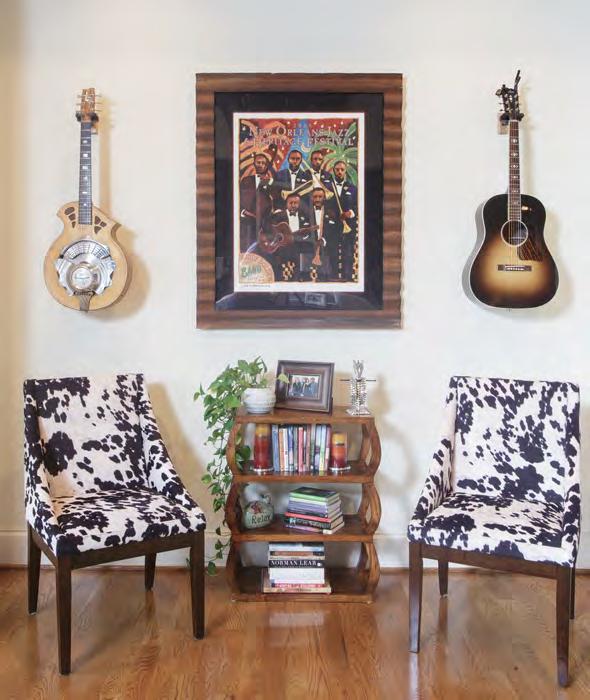
Where he wrote that first record was a small two-bedroom apartment on Adams Boulevard in LA, with a living room set up very similarly to his current office.
“I would sit down with my guitar and just have a pad of paper, and I would practice listening to music,” he says. “And sometimes I would practice playing scales while watching Oprah, and I would sit and write and dream, too.”
He says there’s always a classical radio station on, the music wafting through even when he’s not in there, so it permeates the atmosphere with inspiration. There is a separate studio, and then a green room with snacks and a standup arcade machine for breaks between sessions.
“I have been fortunate to have three main writing places, depending on who I’m writing
with and what the purpose is,” he says. “If I’m writing with someone for the purpose of recording a song, I like to go straight into the control room where we’re going to record. But if we’re just writing just for the sake of writing, I’ll go into the green room and we’ll snack.
Everything in the home was knotty pine when they moved in, so paint was required everywhere, except, of course, the exposed beams overhead.
And while Kevin says his wife takes the lead on inspiring the ambience of the house, they do have a system for choosing colors.
“She picks a paint color, and I go one shade darker. That’s the color,” he says. And for him, it’s Farrow and Ball or nothing. “It’s like you want to eat the wall.”
And Robbie’s fine with the collaborative system they’ve worked out, for their home life and record label, Kind of Blue Music. She runs it, as well as the charity they are involved in, Turnaround Arts, working with a school in
Chicago directly on arts programs.
“Generally if we both talk about it, we come up with an even better idea than what the original was,” Robbie says. “Mostly he kind of lets me do it. But he’s got good opinions. He’s got a good eye.”
For example, the Moores had tried a number of pieces on a large wall in their living room — a kimono from Japan, a bookshelf. They finally together found the perfect piece on a trip to India, a large tapestry that even looks good when the Christmas tree is up.
“Everything we do is big, and we’re on a blues budget,” she says. So it helps that the art that is everywhere around the house is usually tied to people and travels and feelings. An investment always worth making, many of them are even gifts.
Over the fireplace is a photograph from Anthony Scarlatti after Robbie saw something of his on Facebook that immediately made her cry. They have three pieces from artist Brian Nash, including one in the powder room and a
In the green room there are multiple spaces to decompress, including under the painting Robbie painted Kevin for Valentine’s Day 2018.

Inspiring Spaces
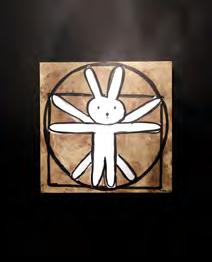
commission Robbie had done for Kevin as a Christmas gift.
A portrait of Amy Winehouse was a gift for Kevin, too, for Father’s Day. It was done by family friend Asher Wood as a thank-you for letting him stay with the Moores for a bit. Other friends, glass artist Marlene Rose and giclee artist Robbie Firestone, have pieces on display.

“Kevin and I wrote a song together called ‘I’m Amazing,’ and those are the lyrics of it,” she says of another special piece. “We had a children’s choir sing at our wedding, and they painted that as our wedding gift.
And the father of Ross Hogarth, Moore’s sound and mixing engineer, is illustrator Burne Hogarth, known for creating the Tarzan comics. The Moores have one of his prints, too, which was framed at Bennett Galleries.

focused on that in the last couple years.”
Robbie even went out on a limb and painted the soundwaves piece in the green room as a gift for Kevin this past Valentine’s Day.
“The more art we’ve gotten here, it just feels so good,” she says. “I want everything in here not to just take up space, but when I walk past it I want it to make me smile. I want to just get that feeling of a special memory, so I’ve really
“I mostly do photography, but I want to learn to paint. So I’ve been tip-toeing into that,” she says. “And we want to show our son to just go ahead and try things. If it’s bad, so what?” NI
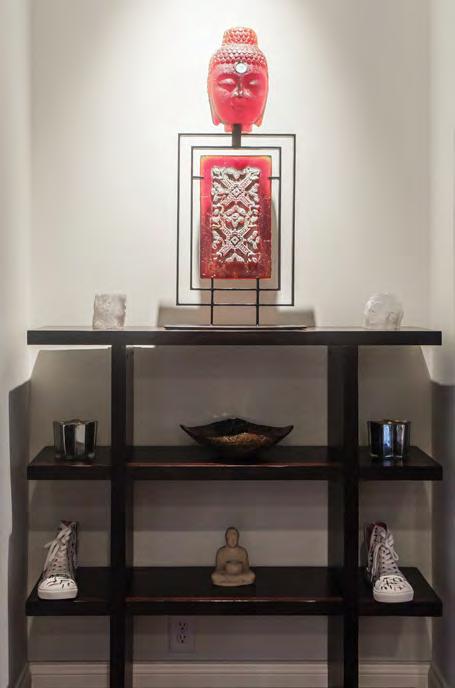

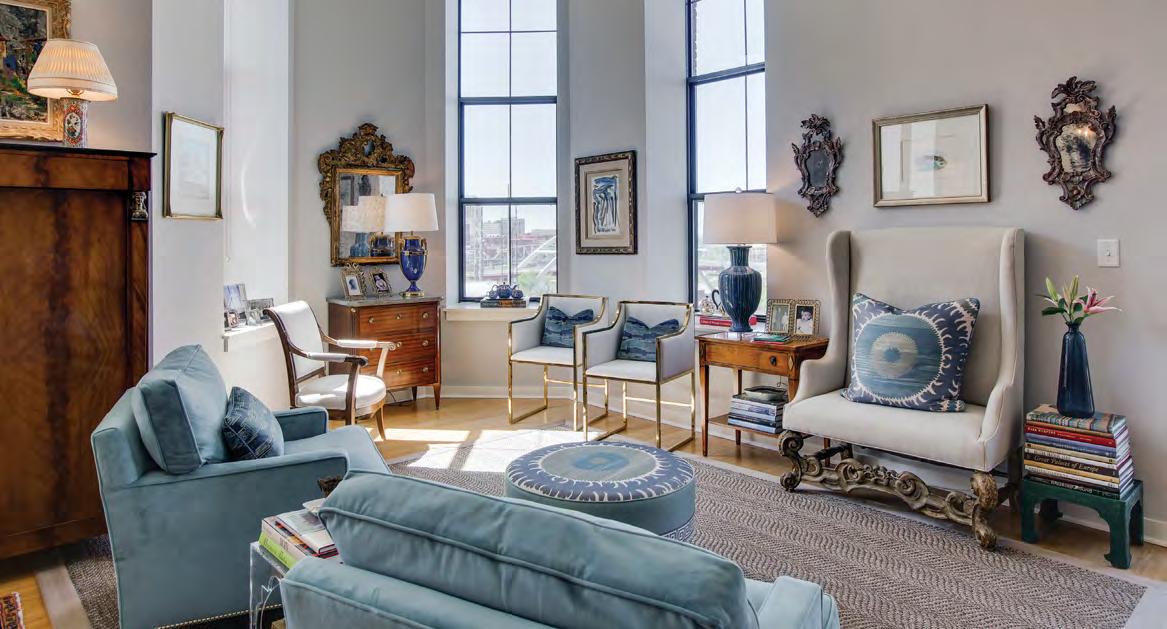


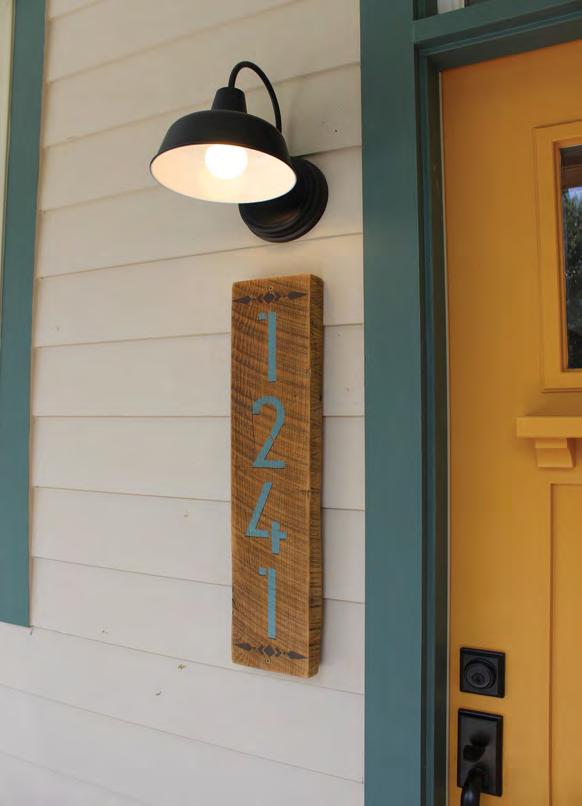
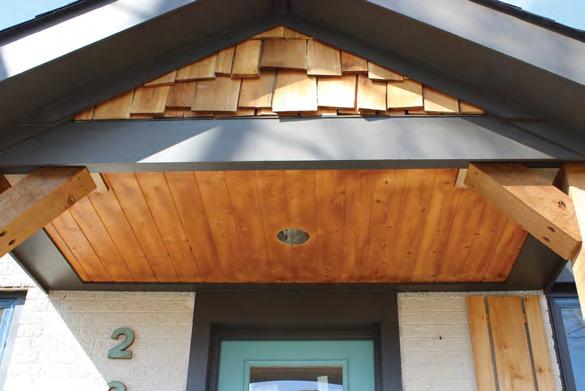

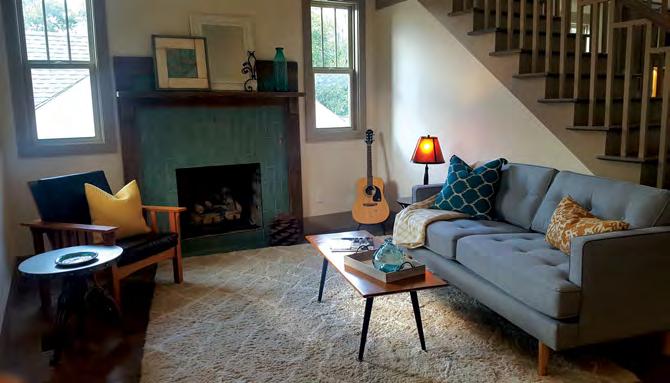

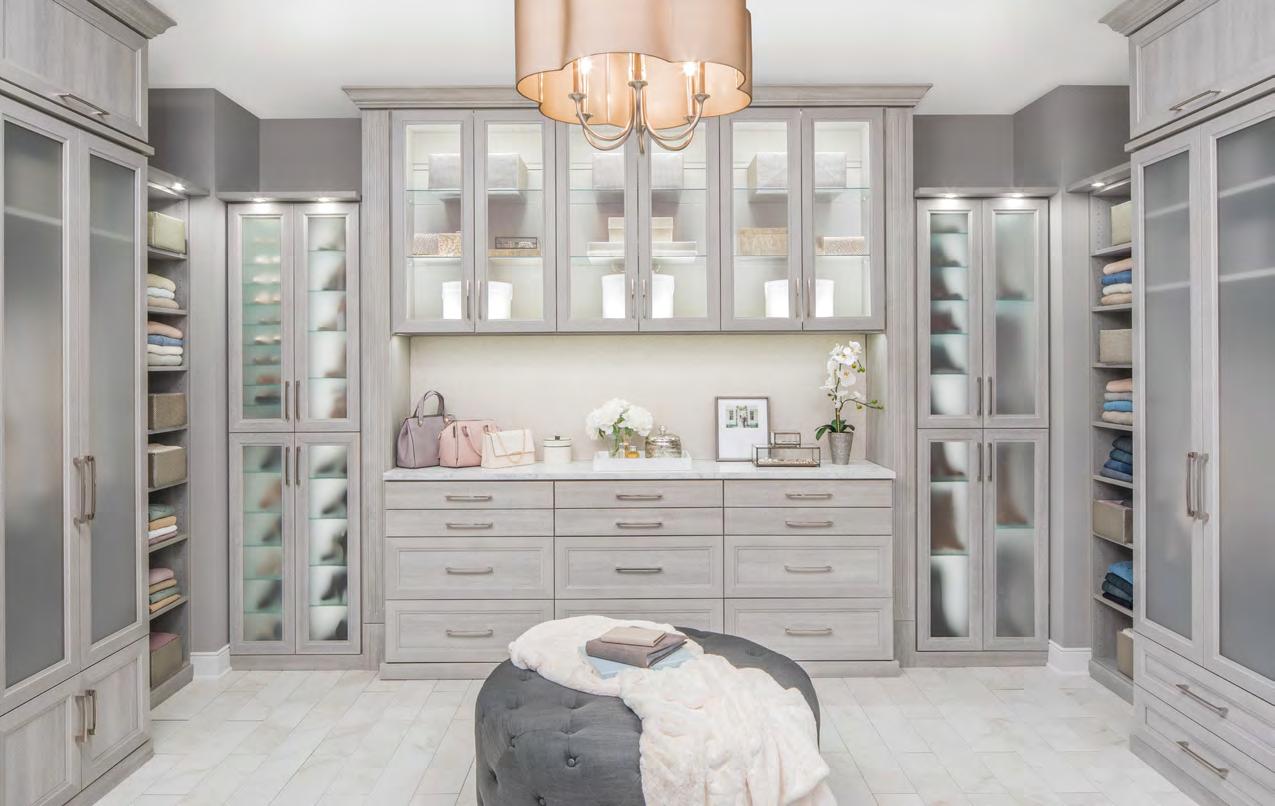

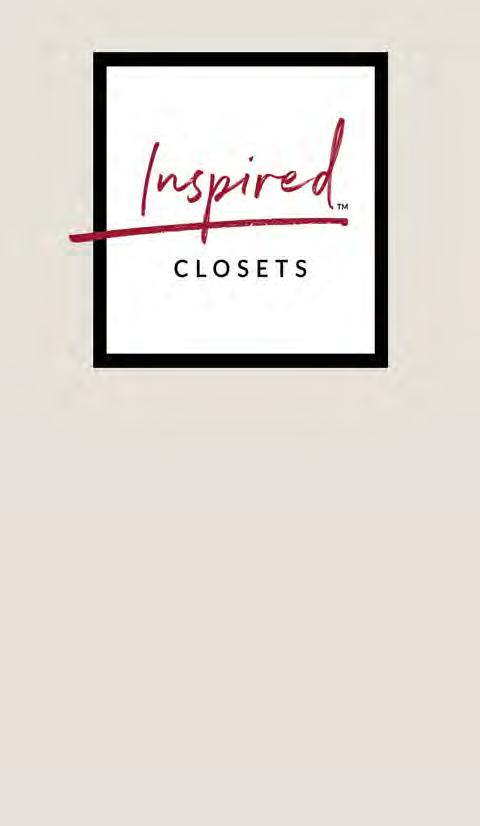


PAPER DOLLS
WALLPAPER JUST THE BEGINNING FOR NEW HAT’S CREATIVE COLLABORATIVE
STORY BY HOLLIE DEESE
PORTRAIT BY SANFORD MYERS | SPACES BY DANIELLE KIRK AND HEIDI ROSS
It all started in the bathroom of a bakery.
It was at Dozen Bakery in the Wedgewood-Houston part of town where Kelly Diehl was working as a pastry chef. She pulled in her longtime friend and designer Elizabeth Williams for a project that was ambitious and a bit off the wall — creating a vibrant covering for the bathroom’s walls.
“Basically we were both on similar life trajectories, going down the path of, ‘What do we do next?’”
Williams says. “It made sense that we started something together. I had never done wallpaper before, and she had never done wallpaper, but we were like, ‘We’ll figure it out.’ And we did it.”
Diehl’s background is in fine art. She created small sculptures, collages, paintings, drawings — anything that sparked her interest — while also working at Dozen as a baker sculpting some seriously masterful croissants. Williams’ background was more in design; she spent years working with artist Bryce McCloud at Isle of Printing after leaving the marketing startup Emma.
They clicked as collaborators just as much as they had as friends.
The response from the Dozen Bakery bathroom spurred project after project, and their work has popped up in some of the coolest spaces in town — the powder room at Germantown Inn, artist Vadis Turner and Clay Ezell’s home, Henrietta Red, Caviar & Bananas and East Nashville boutiques Lemon Laine and Stash.
“It has been mostly word of mouth,” Williams says. But once someone finds them, the collaboration process is a definite back-and-forth between them and the client.
“We’ll meet with them and get what their vibe is, what they’re looking for,” Williams says. “We’ll distill that and present the client with some pattern options. It’s always an ongoing conversation about what’s the best substrate to use, changes of palettes and all that.”
The notoriously difficult installation process has
improved over time, too. It’s even harder for them because they use screen-printed art paper sheets instead of typical wallpaper rolls. But they hired a pro and began to learn. Now it is all part of the process.
“It was a lot of labor,” Diehl says. “We had no idea what we were doing at that point. So he showed us the ropes, and from there we got the basics down and kept practicing and getting better at it.”
And they both give props to their families for always supporting their creative and artistic drives — a luxury not all creatives have. It was at home they learned the power of hard work and problem solving.
“My dad is an entrepreneur, so he was excited that we were embarking on this journey,” Williams says. “He was like, ‘Awesome! Go for it. Don’t be afraid.’”
“I think that’s essential for an artist to really accept themselves and what their gift is to share, and having people support you, because it’s not easy,” Diehl agrees.
With their families’ support and their drive to create, New Hat was born, a name that came out of their desire to try as many new things as they can. Plus it’s simple, symmetrical and easy to remember.
“We can spell it,” Diehl jokes.
Williams says their aesthetic is older motifs with an injection of newer ideas that hopefully keeps the result from being too trendy. “That’s really important to us, that they stand the test of time,” she says.
“Our designs are definitely a different niche than a lot of other things,” Williams says. “We don’t really do illustrated, floral, or the more kitschy designs. We’re more bold and contemporary — graphic and architectural.”
Next up is a set of six wallpapers for a retail product line in April, as well as a collaboration with a local ceramic artist doing a vessel that coordinates with one of the wallpapers.
“We fancy ourselves surface designers, not just
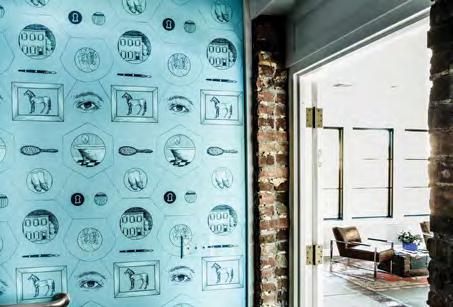

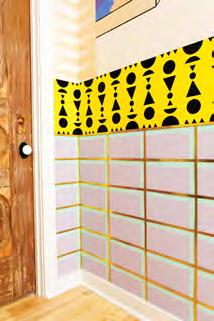
wallpaper designers, and we hope to enter into more projects that allow us to do more of that,” Williams says. “We get to luckily work with some cool architecture friends in town who are letting us put out some more wild ideas.”
Moving beyond wallpaper will hopefully give them longevity in the design world.
“Wallpaper was sort of the jumping-off point because that was the first project we did,” Diehl adds.
They pull from individual inspiration, fashion and architecture for their collaborations, like Diehl’s recent book find about Tennessee coverlets, or from fashion and architecture. But at their core both are tapping into the history and heritage that comes with creating textiles, something that crosses all cultures and continents.
“Women’s work is a huge part of what we care about,” Williams says. “We care a lot about weaving textiles, functional art, ceramics — the decorative arts that have not only been functional for people throughout the years, but women normally made them and they carried stories. Patterns have always carried stories, and so we’re all about that aspect. It’s like using the history, but also changing it to represent where you were at that moment in time.” NI


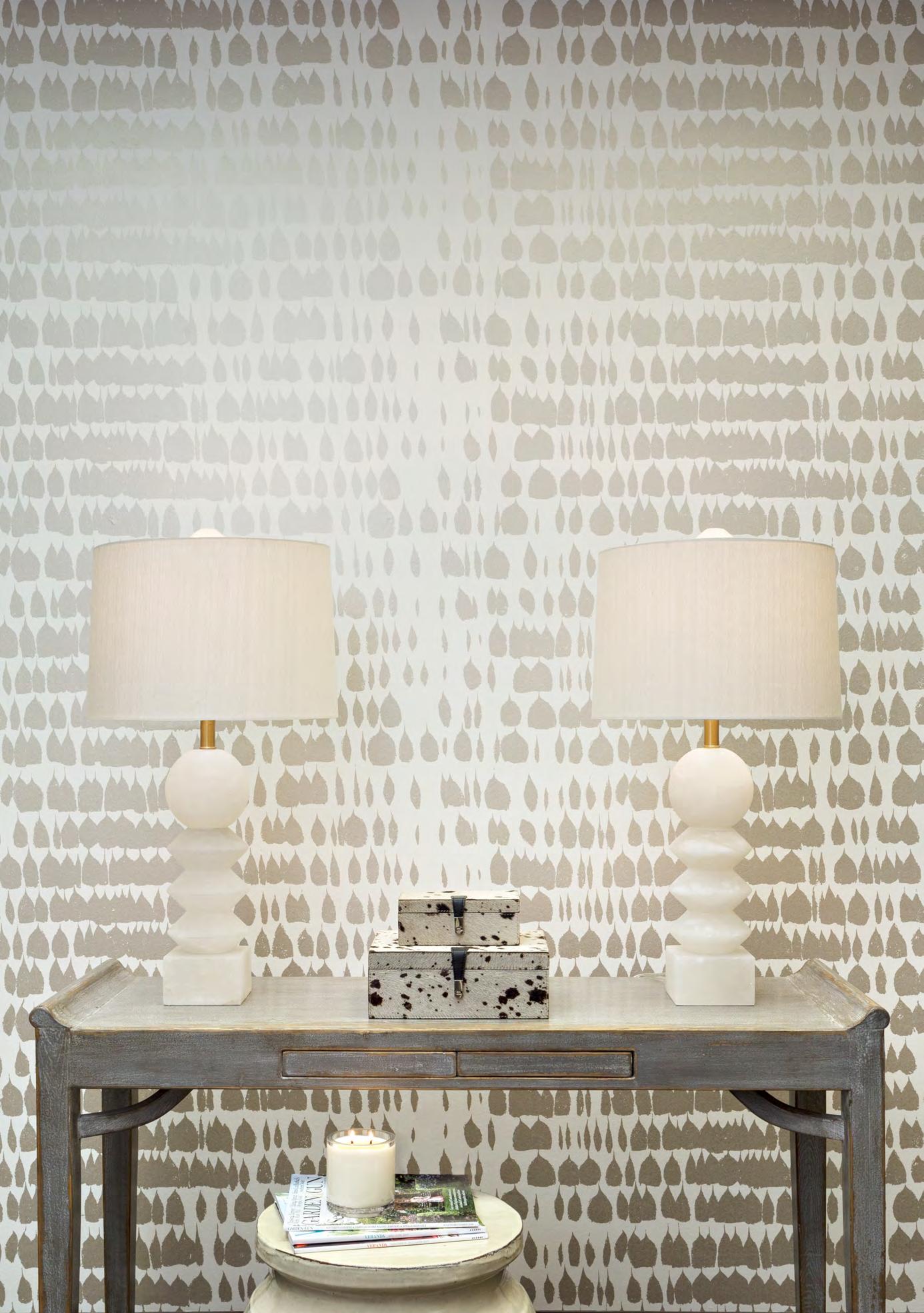



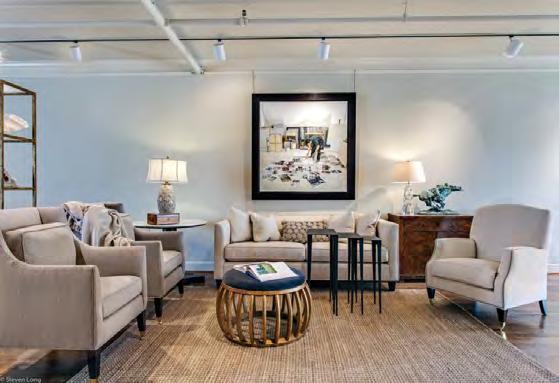
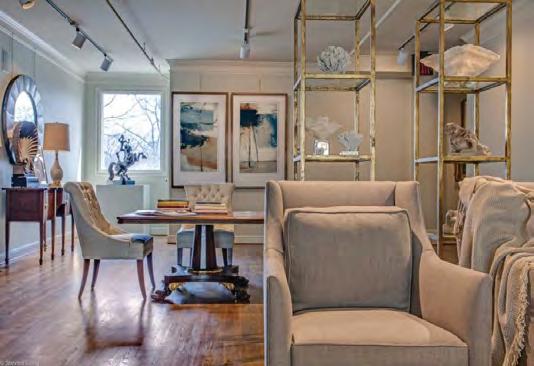
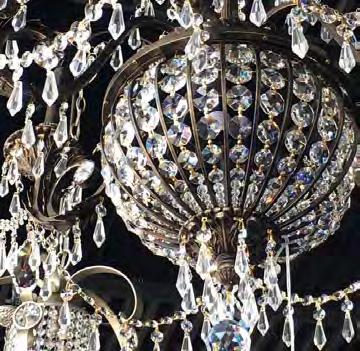

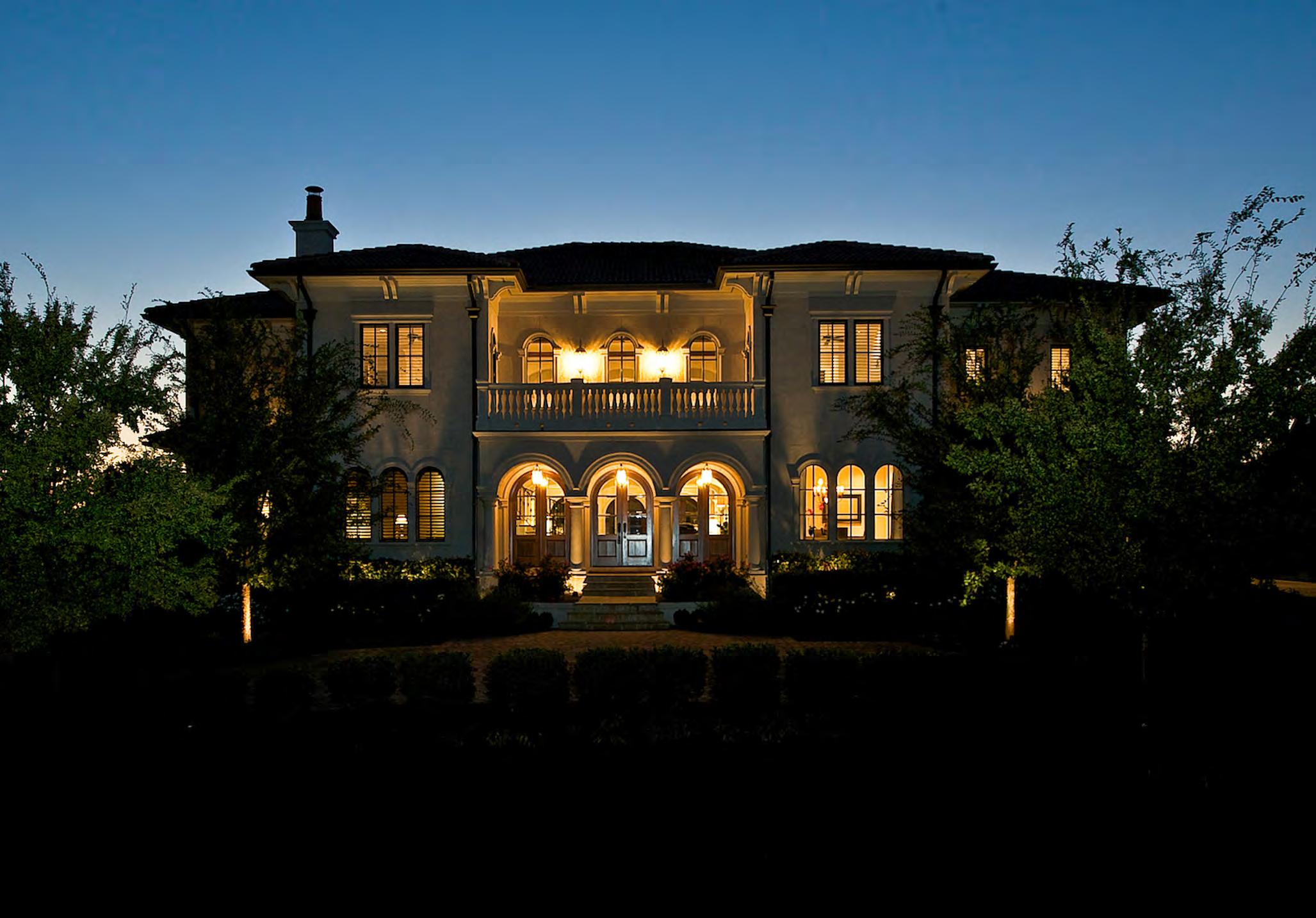







A 12South Transformation
STORY BY HOLLIE DEESE PHOTOGRAPHY BY LESLEE MITCHELL
essica Davis, principal designer of JL Design, is a Hendersonville native whose mother and grandmother both worked in Nashville. Like any Middle Tennessee native, she’s just as impressed by the recent boom of Nashville’s neighborhoods and wishes her grandmother was alive to see how much it has changed.
“She would just be blown away,” Davis says.
Most likely her grandmother would especially love a project Davis recently completed in the 12South/ Belmont area, a neighborhood Davis loves so much she moved there herself in 2014. The combination of newfound energy and historic architecture drew her in.
“I love blending the old and the new and trying to make everyone happy,” she says. “You will run across clients who are just ready to completely gut and put in all new everything, and that’s great. But you have to be careful you’re still honoring the integrity of the original structure, the era in which that structure was created, and the story that structure may have.
“If a home was built in 1908, who lived here? What was life like? What would they have done? I really love creating that juxtaposition between what’s old and new — forcing those elements together in a way where it’s ultimately harmonious.”
So basically, Nashville in a nutshell right now.
And definitely the plan for a recent client who called for a refresh of his 12South space after a divorce. Davis was able to move out some of the traditional and bring in some vibrant elements that shifted the focus of his home — which had all the right bones — to a new perspective that reflected the person he was now, not where he had been.
“I went through the house and tried to say, ‘Okay, let’s make this feel like your home,’ ” she says. “It was a lot


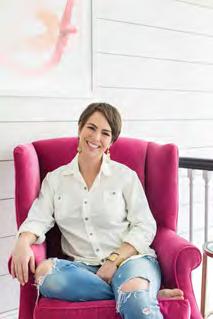
“It was trying to balance traditional and contemporary in a historic home” – Jessica Davis
of fun because he had a lot of input. There were some things that he had already done himself that were really cool and interesting. It was trying to balance traditional and contemporary in a historic home.”
UNEXPECTED DETAILS
His formal sitting room — complete with traditional leather chairs and dark draperies — was rarely used, so Davis wanted to play on his love for music and turn it into a music room.
“When I talked to him, his love of music and his love of Music City [shone through],” she says. “He’s not a musician himself, but he works for a lot of musicians. His mother plays the piano, and his father plays the drums.”
The white piano with red interior in the center of the room is a true showpiece — it was one of those Craigslist scores that keeps people willing to meet strangers in strange places. And while the client was a bit apprehensive about such a bold piece, Davis
assured him it was a must-have.
“You never know what you’re going to find with Craigslist,” she says. “It’s unexpected, and it really pops.”
They went to the flea market and scooped up a vintage Victrola, complete with a stack of records, and then Davis had a large-scale pop art piece placed on the mantel, commissioned from artist Jessica Phillips.
The mantel is also something special. It’s oversized, because Davis thought it helped blend the contemporary elements with the historic brick wall, and it’s a major upgrade from the smaller mantel it replaced.
“Again, I wanted to play up the scale,” Davis says. “I said, ‘We have this historic brick, which I love, but we need to break it up a little bit with some of these contemporary modern elements.’ So I really wanted a mantel that wrapped the entire fireplace chimney and around the side.”
The result is large expanse of almost velvety-smooth wood that contrasts beautifully with the textured geometry of the brick. The painting plays on the bright


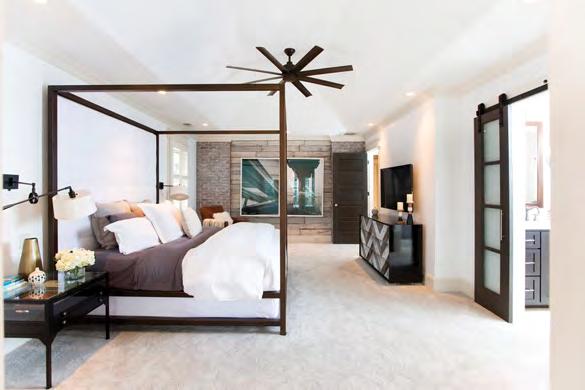

lacquer of the piano, and all of it seems to work with the structural columns in the room that couldn’t be moved.
“It is really just a balance of elements,” she says.
PUSHING COMFORT ZONES
Wallpaper is a growing trend, but it still is out of many homeowners’ comfort zones. Even when someone wants wallpaper, they often waver when they are actually faced with options. That was certainly the case when choosing the paper for that same client’s dining room.
“The first wallpaper that I really pushed for was much more bold and loud,” Davis says. “I wanted to go nuts, but he didn’t quite let me go nuts. But this was a fantastic one because of the texture. It’s a very heavy paper with velvet geometric on top. And I think for him, the tone-on-tone made him a little more comfortable.”
Some of his existing pieces got a coat of paint to make them more modern; the dining room table and hutch were transformed from dark wood to a charcoal-blue mix that made them more cohesive with the space.
Dated lighting was replaced throughout the house, adding new chandeliers and swapping out sconces. Fixtures and faucets were updated too — changes that seem little but make a big difference. Then, art was brought in, which Davis says is one of the most important elements in any space.
“Art sends a message that tells the story of who people are,” she says. “I want the pieces to tell a story, their own story, but also a story that connects with the homeowner.”
All together, the goal was to create a space that evoked who the homeowner is and how he lives.
And it worked.
“Any project I do, I’m really trying to capture the essence of the clients and their story,” she says. “When I really partner with a client and create a space that I know they are going to love, I spend a lot of time with them trying to uncover the design elements they are drawn to. Is it line, is it texture, is it geometry, is it color relationship? Then I try to achieve that, where they not only feel comfortable in their space, but leave each room with a feeling.” NI

B Inspiring Spaces
SAVANNAH YARBOROUGH
EIGHTH AVENUE LOFT, STUDIO EVOKE ECLECTIC ELEGANCE
irmingham native and luxury leather jacket
designer Savannah Yarborough ended up in Nashville by way of London, as a compromise with her former boss, designer Billy Reid. He wanted his head of menswear in Florence, and she wanted to be in New York.
“Nashville was the happy medium,” she says.
Yarborough soon realized she wanted to focus on her own brand, creating something that was incredibly special but anything but one-time wear. So she launched AtelierSavas, a bespoke leather jacket company that was the perfect combination of luxury and utility.
“It’s just as common as a pair of blue jeans,” she says of leather jackets. “You pull one out 10 years later, and it’s like, ‘Oh, this still looks really good.’”
STORY BY HOLLIE DEESE PHOTOGRAPHY BY CONNIE CHORNUK
downstairs in an additional 2,000 square feet, an expansion from the original 800.
“It’s awesome being able to be spread out,” she says.
May marks two years in her loft, a former photography studio. She arrived from London with just two suitcases and a box of books, and outfitting her apartment has happened gradually and naturally — with gifts from loved ones and décor picked up on travels.

To find the perfect place to live, she drove around looking for spaces that felt right. When she stumbled upon the Big Red Lofts on Eighth Avenue
South, she knew that’s where she had to be. She tracked down the owner — no easy feat — then got on a waiting list. Nearly four years later, she was able to snag one of the studios off the alley for her business, and with it came an apartment. The landlord even had her original application.
“I know I was destined to be in this building from the beginning of my time in Nashville,” she says.
Now she’s taking over the space. Her living area upstairs is an upgrade from her original no-window unit and is now in one filled with windows and light and all things amazing. The storefront and sewing room for AtelierSavas is
“I lived in San Francisco and in London, and one thing I really cherish is grit,” she says. “It can’t be this beautiful thing that you’ve made. It’s got to be influenced by all the things. And that’s what I love about this place. It’s got all sorts of weird things, but I love it. My floors are made of plywood, which is terrible. But at the same time, who cares? It doesn’t have to be perfect.”
Her mom had told her she would gift her a bed, so Yarborough planned to commission something from her carpenter when she spotted what she has now in a pile in the corner of a consignment shop. “I was like, ‘What is this bamboo pile?’ I started lifting it up and was like, ‘Holy shit. This is a bed. This is a real amazing bed.’ I’ve never seen anything like it.”
A friend in town from Texas with a truck and a couple of buddies hauled it over, and then she painted it gold. Naturally.
“There’s some sort of feeling that runs through me when I find something I like, and then I just have to have it,” she says. “I know when I like it.

I love Art Deco stuff, clearly, but that is ’80s Art Deco. I like to collect things, too, from places I go and just different things as they show up. I never really scout out anything.”
Like the bed, pieces almost seem to find her, including the 12-seat Milo Baughman dining room table she found among spiders and dust at a warehouse in Kentucky. She got it at a price so cheap that it cost five times as much to have it delivered.
“I had been looking for a dining room table, and I knew, at some point, it would show up. I just wasn’t expecting it that day,” she says. “I just started finding things.”
A cluster of art by the table includes a piece done for her by the mother of her half-brother and sister; a tiger from a trip to Mexico; a yellow framed bouquet she made when she was 5 and gifted back to her by an aunt; an illustration of her by one of her old employees at Billy Reid; a
photo from an artist in New Mexico gotten on a trip with her mom; and “Drake’s Taco Soup,” a drawing her little brother did when he was 4.
“It’s just totally weird,” she says. There is inspiration in the design of her showroom, too, from the Moroccan chandelier found by her mom and the shelf scored off Etsy. Mainly, it came together with the help of fellow creatives, like the hangers and brass stands designed by Yarborough and made by a friend in Alabama, or the mirror made by her carpenter, or the neon sign created by another friend in Austin from a drawing they sketched out on a napkin and that hung in her East Nashville home before she even had the showroom.

Yarborough’s home is filled with items that seem to find her instead of the other way around, and the former photography studio is filled with windows and light.
“I had this neon sign on my mantel,” she says. “We had no business. I had one sewing machine and a table, and I was like, ‘We’re in business!’”
Inspiring Spaces
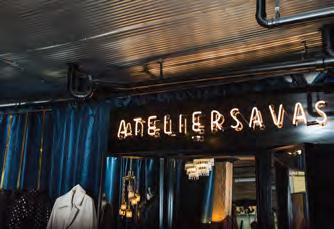
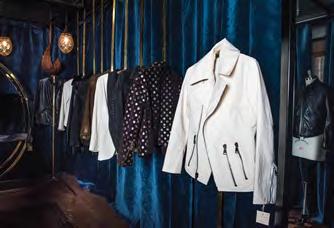

Yarborough says the first leather jacket she designed looked terrible, just flat and boring. So she decided to dunk it in a bath, then wore it while it dried. The effect was eye-opening.
with clients, where they go through a range of materials and styles from the showroom to get an idea of what they are looking for. Then she takes about 30 measurements and begins to sketch.
Once the idea is solid, she makes a canvas version of the jacket for them to come back and try on. “And that allows us to make sure the fit is exactly as it needs to be, because that’s really the most important part,” she says. “It allows them a chance to see it before its final state, where it really can’t be changed too much.”
The whole process takes about three months— not too bad considering the piece is meant to last forever and hopefully be passed on to the next style icon in the family.
“I’m constantly surprised by the final garment. It’s this long process, and you don’t really know until it’s put together. So that’s kind of scary and also very exciting most of the time,” she says.
In her studio, Yarborough’s style shines as bright as the neon sign a friend made for her, and once sat on her East Nashville mantel until she was open for business. Hanging in the workroom are canvas versions of all the jackets she has made, a visual archive of her work.
“It totally molded to me,” she says. “I had never had a leather jacket before, and all of a sudden I realized that every time I put it on, I was like, ‘I feel good.’ It gives you a level of power, I think, that no other garment does. It doesn’t really matter, the style of it, but it’s like this protection thing that is also luxurious.”
The leather is from all European tanneries, mostly Italy, though some in France and some in Turkey. Her exotic skins are all wild-caught in the U.S., so all the American alligators are legally farmed and then tanned in Georgia. “We buy from the same supplier as Hermes,” she says.
Yarborough usually does a one-on-one meeting
Jackets start at $5,000, and all the construction of each one-of-a-kind garment is done in the studio. Her patternmaker just moved to Nashville from New York, too, along with a longtime, master-level leather tailor, which helps streamline the process and creates jobs in the sewing trade. Soon you might even see some leather leggings or stretch suede dresses hanging in the showroom. As long as it matches the person it is made for.
“It’s rare that I’m designing things just because I want to design them,” she says. “I really like to get to know the person, what their life is, and then I have to collaborate with that. I mean, of course Mick Jagger is my icon, and he’s beautiful in every period of his life. But not everyone wants to look like Mick Jagger.” NI

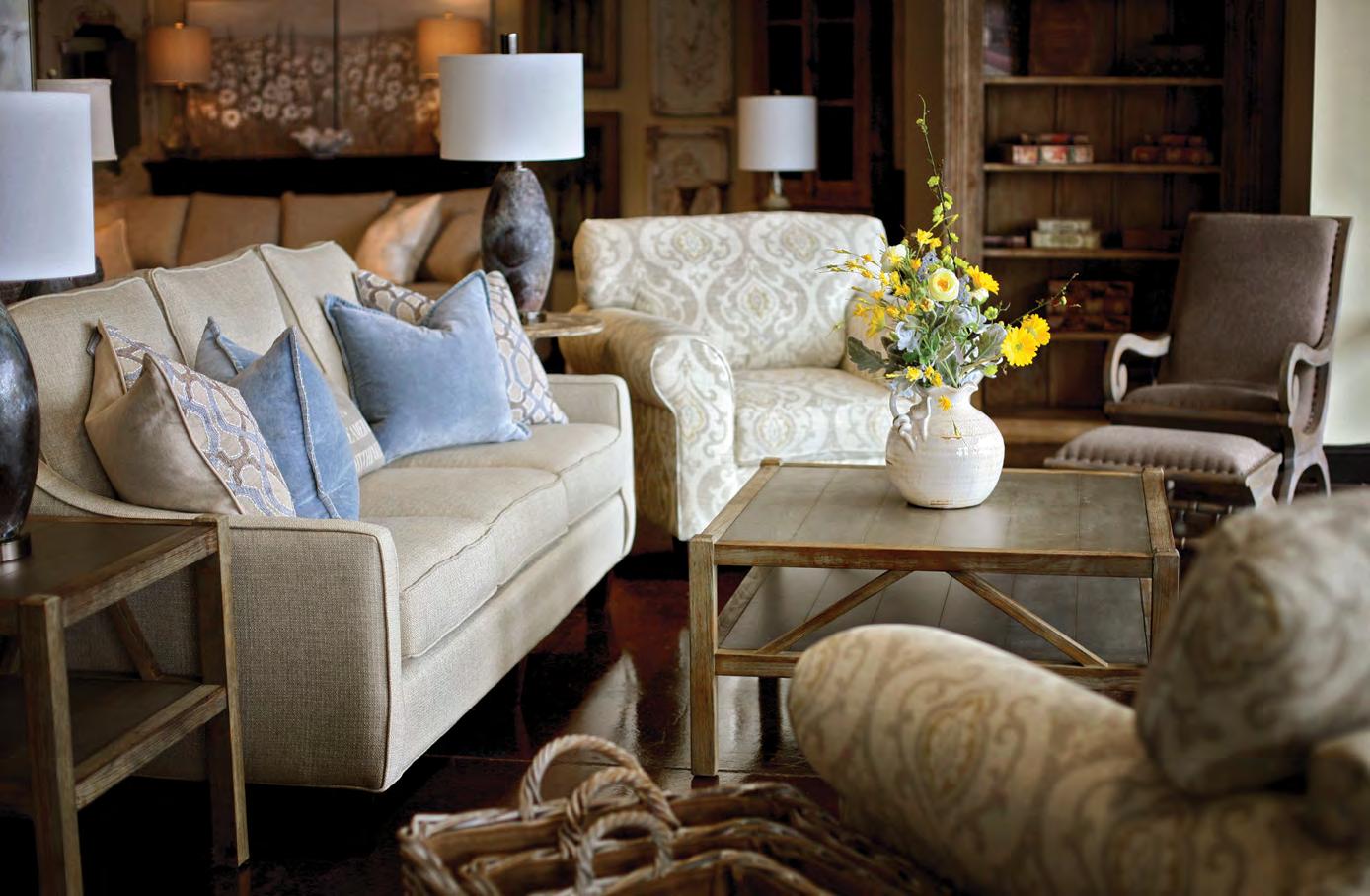



Inspiring Spaces
BEBE BUELL
ROCK ’N’ ROLL MEETS RIGHT-AT-HOME

here are some places you walk into and they immediately feel like home.
founder Dorothea Johnson, to the middle-school photos of her daughter, actress Liv Tyler.
STORY BY HOLLIE DEESE PHOTOGRAPHY BY REEVES SMITH
That’s exactly how it is walking into the Green Hills-area residence of Bebe Buell and husband James “Jimmy Walls” Wallerstein. At least it is once you walk past the full suit of knight’s armor.
It is that juxtaposition of memories and mementoes with modern humor and eccentricity that makes their home so familiar and fun. Look just a little closer in any direction and true treasures are revealed, from the collections of marble eggs passed down from her mother, Protocol School of Washington
“Everything has a story,” Buell says. “I don’t have one thing in my house that does not have a story.”
Like the photograph of Joe DiMaggio and Marilyn Monroe in her dining room that used to hang in the couple’s own dining room in Connecticut. Or her mother’s silver collection. Or Chinese urns filled with pet ashes. Or the original art gifted from exes like Mick Jagger. Or photographs with her and Hugh Hefner. It’s not exactly the life history that just anyone can acquire over the years.
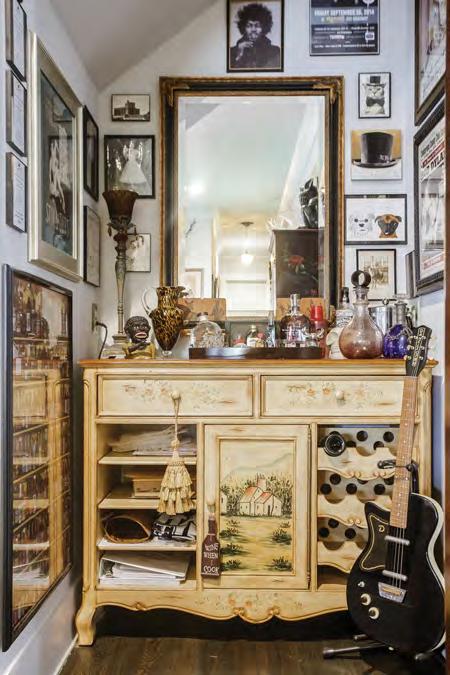
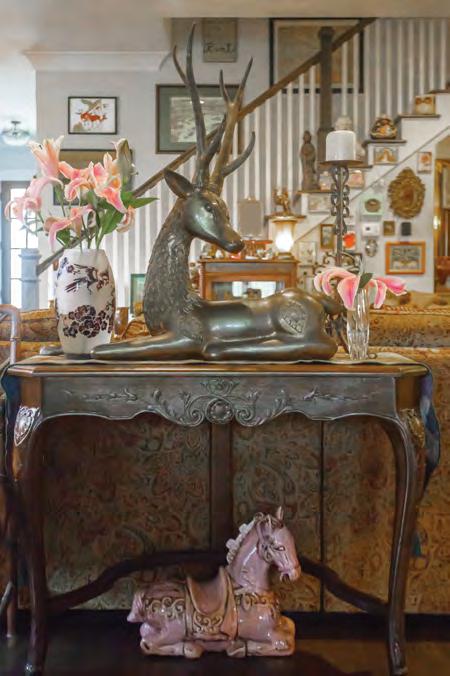
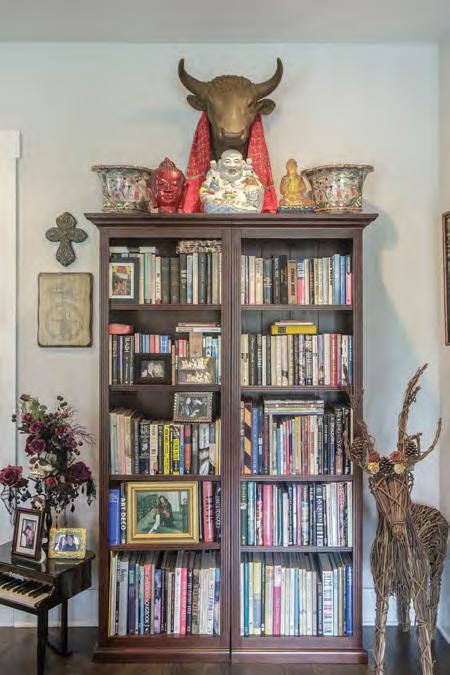
But Buell isn’t just anyone. She is pretty much a pop-culture icon who has had a front-row seat to some of the greatest creative minds of our time, while making plenty of noise of her own. And her home with Wallerstein is an homage to all of that.
Buell was discovered by the Eileen Ford of Ford Models after high school. She left her native Virginia for New York City, where she soon became involved with legendary rock musician Todd Rundgren. She was “Playboy” magazine’s Playmate of the Month in November 1974, and the scandal of being the first fashion model to appear in the magazine led to her being dropped by Ford Models. She then signed with Wilhelmina and often appeared in “Cosmopolitan” and international editions of “Vogue.” In 1977 she gave birth to her daughter Liv with Aerosmith singer Steven Tyler.
Buell, one of the main inspirations for Penny Lane in the Oscar-winning film “Almost Famous,” has been close with some of the most creative
More is more at Buell’s house, with mementos, photos and keepsakes that keep her grounded in her past and also revel in her now, like her role as a grandmother to Milo, Sailor and Lula Rose.
Inspiring Spaces
people around, including Jack Nicholson, Andy Warhol, Mick Jagger, David Bowie, Iggy Pop, Joey Ramone and Ric Ocasek, who produced her first four-song EP, “Covers Girl” (1981). It featured The Cars on backup and was one of Rhino Records’ first mainstream releases.
After coming to Nashville to contribute to an Eddy Arnold tribute album, she convinced Wallerstein this was where they needed to be.
“I got sucked into the thing they call the vortex of Nashville,” she says. “You know they say you don’t pick Nashville, Nashville chooses you. The only thing Nashville’s missing is an ocean. But if the New Madrid Fault does what they say it’s going to do, we’ll be beachfront property.”
Her home is an eclectic collection of family heirlooms and rock ’n’ roll history, with a Restoration Hardware chandelier thrown in. It
was one of the first pieces Buell purchased when arriving.
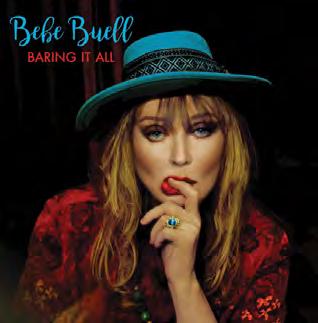
“I’m not a big shopper. Although when one must shop, I shop,” she jokes.
The laundry room is a poster gallery of shows she has played and attended, while the hot-pink bathroom downstairs is inspired by the erstwhile Elaine’s restaurant and bar in New York. It was known for its regular crowd of celebrities, musicians and writers.
“The first time I went there in the ’70s, I went into the bathroom and just every square inch was filled with pictures. And so I swore one day I was going to duplicate that bathroom, and I finally got a half bath where I could do that,” she says.
The bathrooms are everything at Buell’s home. Upstairs is the “Dog & Skull,” with luxe black wallpaper embossed with gold skulls. The paper
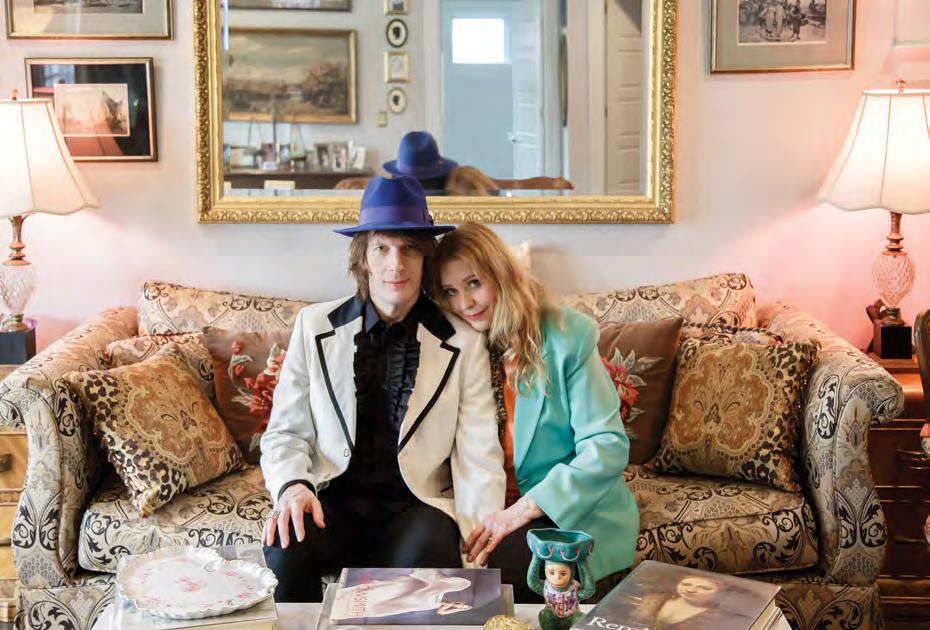
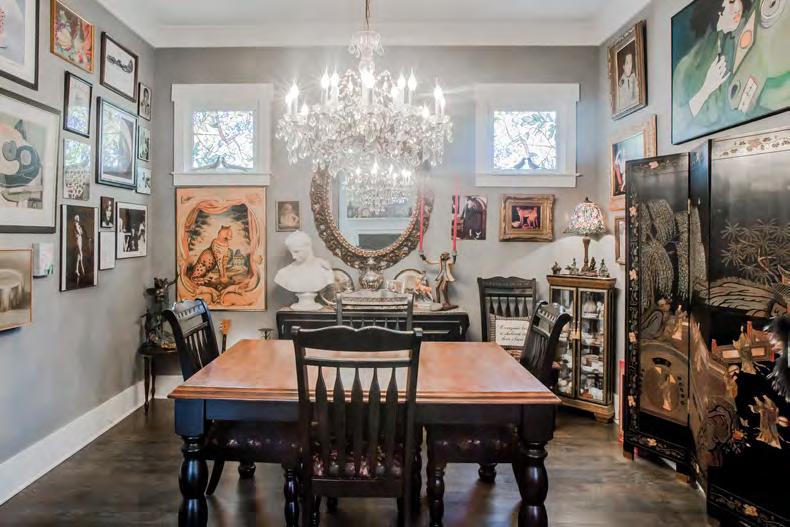
is offset by framed 1920s dog postcards that Wasserstein’s mom collected as a child. In the master bath, Buell’s standalone bathtub is lined with rubber duckies.
Her bedroom is a mix of animal and floral prints and bright, bold color, inspired by designer Diana Vreeland’s living room.
“I’m Cancerian, and I think I’m a natural nester,” she says. “My daughter is like me, too, but she doesn’t get as attached to things as I do — the stupidest little things that I just can’t throw away. But I’m not a hoarder because I’m too organized and too clean to be a hoarder.”
Buell never stopped making music over the years, either in her own band or guest performing with others. Her first live show in Nashville was at the Bluebird Café on Mother’s Day 2014.
“They let me come in there with full band and make some racket, which was a lot of fun,” she says. “And four sold-out shows later, it’s become the place where I go to test new material and to bond with real people. Those audiences are half tourists and half die-hard Nashvillians.”
You can find her playing regularly at 3rd and Lindsley and Basement East and The Basement, and as a guest vocalist with Thee Rock n’ Roll Residency at Mercy Lounge, and with The
Long Players.
In April, Buell released what she says is her most personal album to date, “Baring It All: Greetings From Nashbury Park,” produced by Wallerstein.
“I have a message about ageism and sexism, and that’s one of the main reasons why I, at 64 years old, am carrying the flag for us all,” Buell says. “There’s no reason why all the charts should be dominated by children. It’s fantastic that there’s so much creativity, and when you think about how young the Stones and The Beatles were when they got started, they were babies. But there’s a whole bunch of people out there making music. You don’t want to say, ‘Oh I play the oldies,’ because no, my music is now. It’s current. I don’t play oldies.”
She finds inspiration for her music all over Nashville, even in her own backyard, which she says is built on top of a Civil War battleground and brings a beautiful energy to the space. And the atmosphere is not too different from growing up in Virginia.
“It brings me back to my childhood, the smells,” she says. “I’ll be walking down the street here and suddenly something will come under my nose that I remember from when I was 8. The smells of the South — you can’t get them anywhere else.” NI

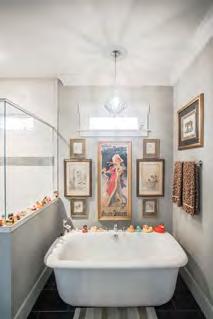

Above left, Buell’s Restoration Hardware chandelier lends grandeur to a room filled with amazing art and family heirlooms.
Buell’s bathrooms can keep guests entertained for hours, each with a distinct personality that is anything but staid.

Designer Spotlight TIM RIFFLE
Like so many creative people in Nashville, Tim Riffle moved here 10 years ago with one dream in mind — music. Instead, the Southern California native has succeeded in a career that is totally different but has been no less inspiring.
One day Riffle, who was then working in the Sony Music office, wanted to give a friend flowers. He went to a grocery store and had the woman working in the floral department build a bouquet instead of pulling one of the plasticwrapped ones out of the barrel. While he loved his conversation with the woman, the finished product? Not so much.
“What she made was awful,” he says. “I couldn’t bring myself to say anything, so I just left.”
He couldn’t present the bouquet as it was to his friend, so he stopped at another grocery store, picked a few things to add to the arrangement, and put it together himself. The reaction was not at all what he expected.
“I just arranged it and thought it looked at least better than it had,” he says. “I took it to my friend the next day, and she was over-the-top about it.”
Then everyone at her office wanted to know where he got it. His new business, Tim Riffle Environments, took off from there.
Arranging beautiful floral displays may be an inadvertent career for Riffle, but it has not been entirely unexpected.
“I grew up with a love for helping my parents — my mom, specifically — in her yard,” Riffle says. “Plans and landscaping, helping her do the whole rose garden thing — general upkeep and landscaping for that. She really enjoyed flowers and being outside, and she wanted them all around her house.”
In addition to the succulents he uses in many
of his designs, Riffle often uses cymbidium orchids and ranunculus; his favorite colors are deep burgundy and white.
Above all, he loves working with what is available,

stretching his creative abilities every day for his growing list of clients — which includes a mix of special event organizers, retail spaces and residential properties.
“I like that I can create something from scratch, taking raw materials — a vase or container or whatever thing I find that’s cool — and then different bunches of flowers, and create something that’s interesting to the eye,” he says. “It’s so hard to [replicate] things a second time — each creation is … different and new. My inspiration … really comes from the materials that I’m working with at that time.”
Riffle is still involved in music. He sometimes sings on friends’ demos or projects, and he’ll get together for group sessions on occasion.
“I like to do live music and have clients that are these amazing songwriters and performers in town. It’s cool that it still gets to be this part of my life, just in a different way than I thought when I moved here to pursue it.”
And Riffle still delivers most of his arrangements himself, if only to see the end result of his creations — happiness and joy.
“As a creative person, you are looking for that person to be pleased, that person to smile, that person’s reaction,” he says. “I do love it when people just seem to be blown away.” NI
STORY BY HOLLIE DEESE
BY GABE FORD




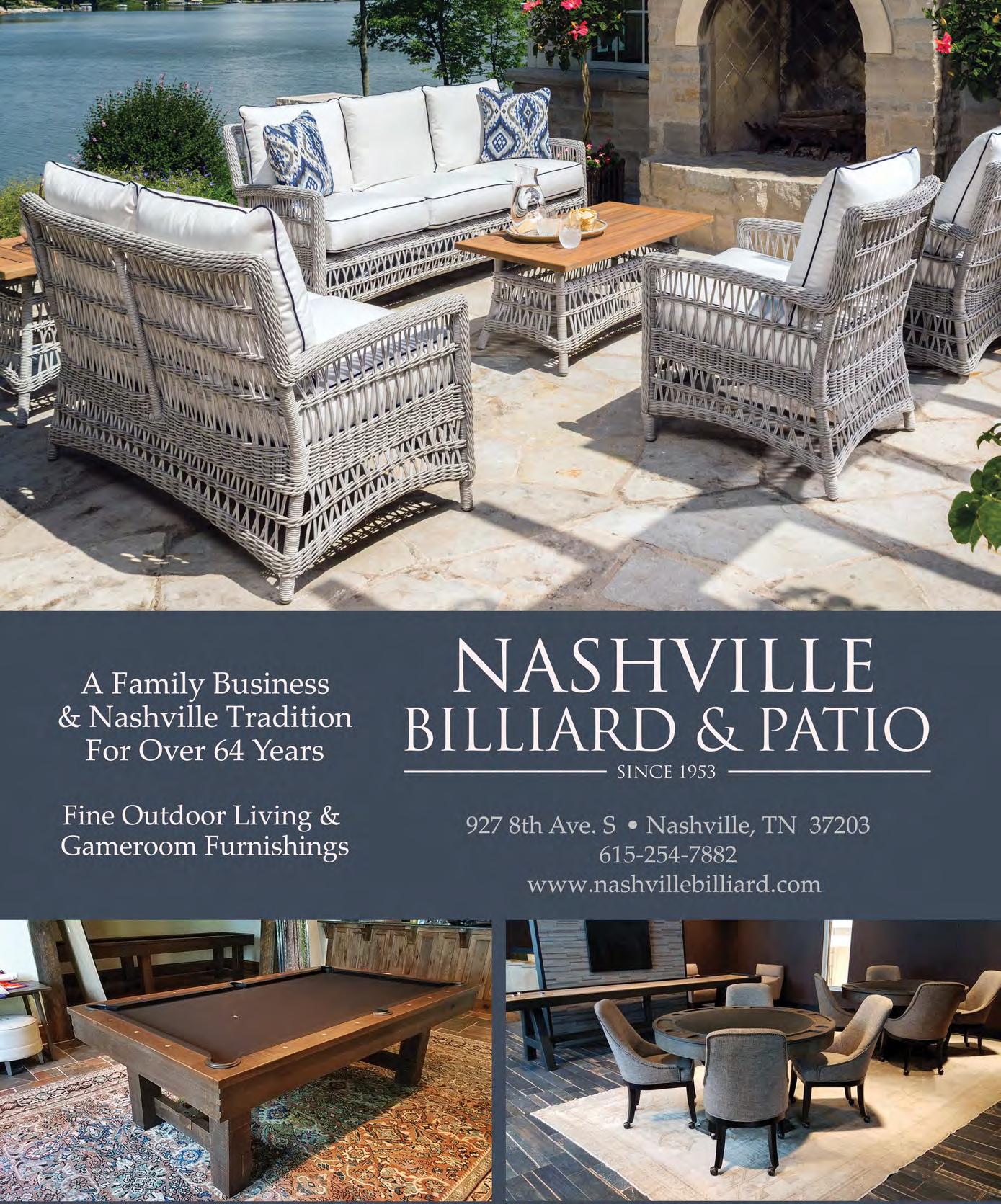





FARM TO HOME
Anna Yeager Brakefield, 28, is a thirdgeneration cotton farmer. Though it’s not what she ever thought she would be doing, it is precisely where she wants to be.
With a background in design and a degree from Auburn University, Brakefield left the country of North Alabama for New York City. She met her husband there, and after the wedding they moved to Nashville. She had a job in advertising.
Back home, Brakefield’s father, Mark Yeager, had always been involved in the three “C’s” of agriculture — cotton, corn and cattle — with sundry crops worked into the rotation, like soybeans and potatoes. In 1994, he built his own cotton gin and began baling and selling to manufacturers.
In 2015, his kids installed Instagram on his phone. Yeager began updating with photos of cows, baby
goats and other captured moments of farm life. One day he posted a picture of an employee moving a cotton bale with a new forklift, and his sister sent him a note saying she’d “love some sheets out of that good Alabama cotton.”
“That just kind of festered in my mind, and I never let it go,” Yeager says. He knew he had to make products from the cotton he was growing, and that his daughter would be the perfect partner. That same year he proposed a business partnership.
“I didn’t think, until I got this idea, that I would have Anna back around. She liked Nashville. She liked New York,” Yeager says. “She knows farming, but I didn’t see her hanging around the farm that much. But ... I got her back.”
And she was on board 100 percent. “I quit my job and kind of took a leap of faith,” Brakefield says.
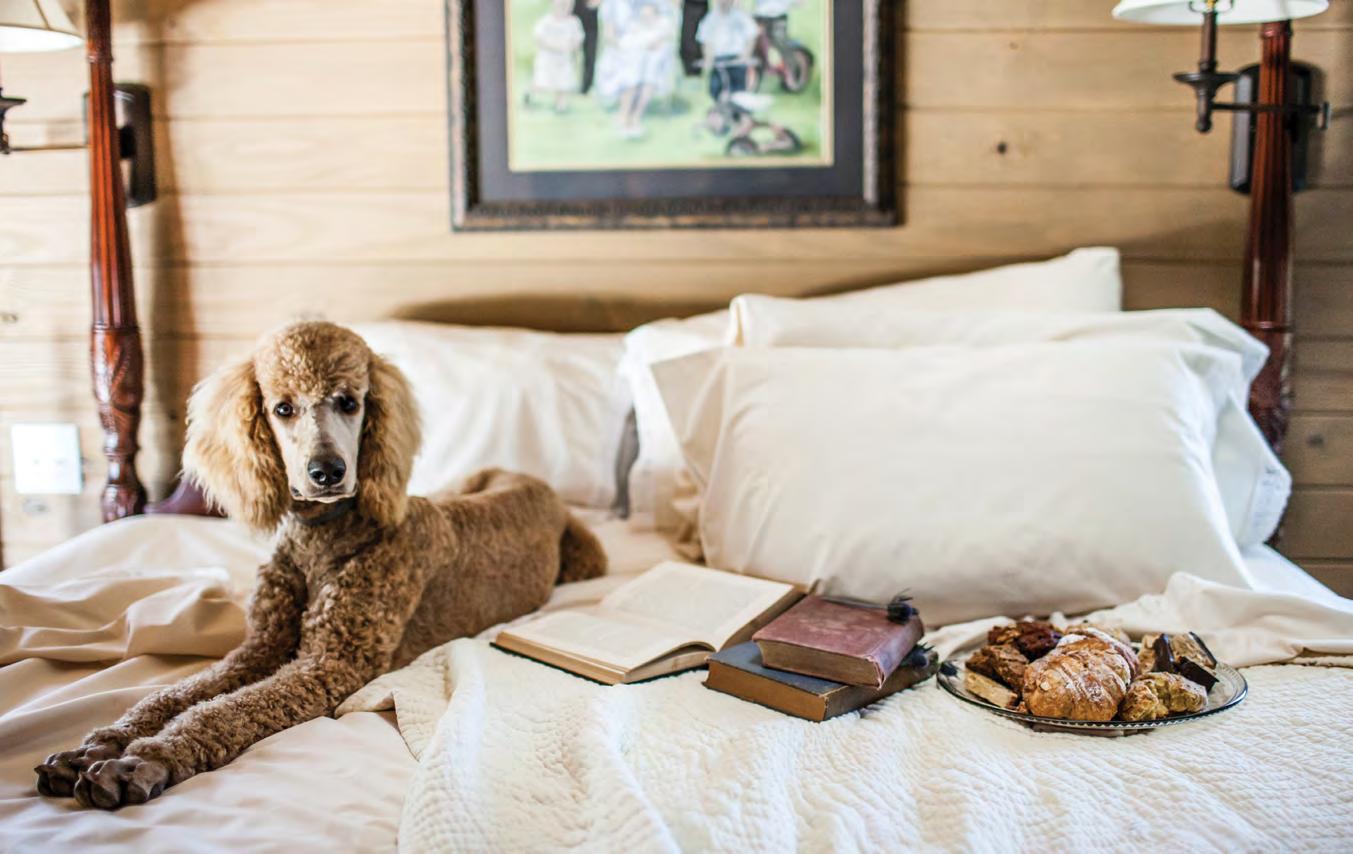
FATHER AND DAUGHTER
GROW, CULTIVATE AND CREATE
Over the past few years, the father-and daughter team has grown from one loom to four. Today – Red Land Cotton, named after the red clay soil of the family farm, is the only farm-to-fabric linen maker in the United States.
“We have complete control of our process,” Brakefield says. “We’re able to select the best fibers that come out of our gin and use those in our textiles.”
What the family doesn’t do themselves, they control from start to finish with proprietary vendors in South Carolina and Georgia. The cotton is spun into yarn and plied twice in Graniteville, South Carolina. The yarn is shipped to 1888 Mills in Griffin, Georgia, where they weave, finish and sew the towels all in one facility.
And in their hometown alone they have created about seven jobs.
“Our hometown is very agricultural, so a lot of the
BY HOLLIE DEESE PHOTOGRAPHY BY GARY CLARK AND EMILY DORIO

jobs are ag-based. But we also used to have a T-shirt factory,” Brakefield says. “And when the T-shirt factory shut down, that really took a toll. And then there was a paper mill [that] … shut down, too, so the whole town has really seen an economic decline. To be able to even add those five to seven jobs is very rewarding.”
By pairing art with agriculture, they reverse-engineer their heirloom linens to create some of the most comfortable sheets possible. The yarn size they use in the bed linens is much thicker than what is traditionally used in sheeting, and the products are not finished with formaldehyde resins.
As a result, the fabric washes like a linen with a slight wrinkle, inspired by the cool, crisp comfort of a 1920s bedsheet Yeager remembers from his grandmother’s house.
“Dad was actually the one who got very nostalgic about his grandmother and the sheets that she had at


Anna Yeager Brakefield and her father, Mark Yeager, along with dog Cotton, appreciate the ability to grow their own cotton, gin it themselves, then create a beautiful new product that can inspire memories for a whole new generation.


her house — how they were starched and crunchy,” she says. “We asked around from friends who had old trousseaus and found the old sheets. They let us cut it up and recreate it.”
The Red Land Cotton line now includes bed linens, shams and duvets, towels, dish towels and pillow covers. Tea towels and pillow covers are limited-time items made from “seconds” fabric. This fall, adult quilts are being introduced, crafted from the squares left over



from fitted sheets. Soon a baby’s bedding line will be available, inspired by Brakefield, who is expecting her first child this year.
“We’re trying to brand our cotton as the story of our farm, taking care to grow it responsibly,” Yeager says. “It’s really a family effort, from my wife and my two sons and Anna. We’re all in the family here, and it’s a dream come true.” NI


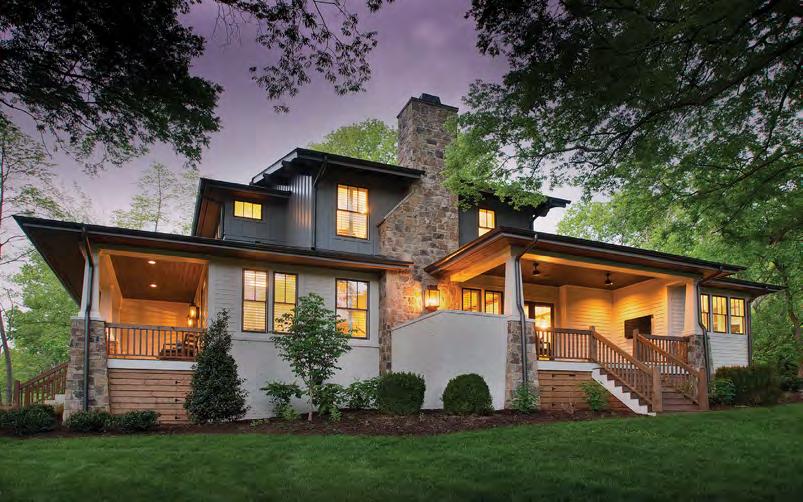

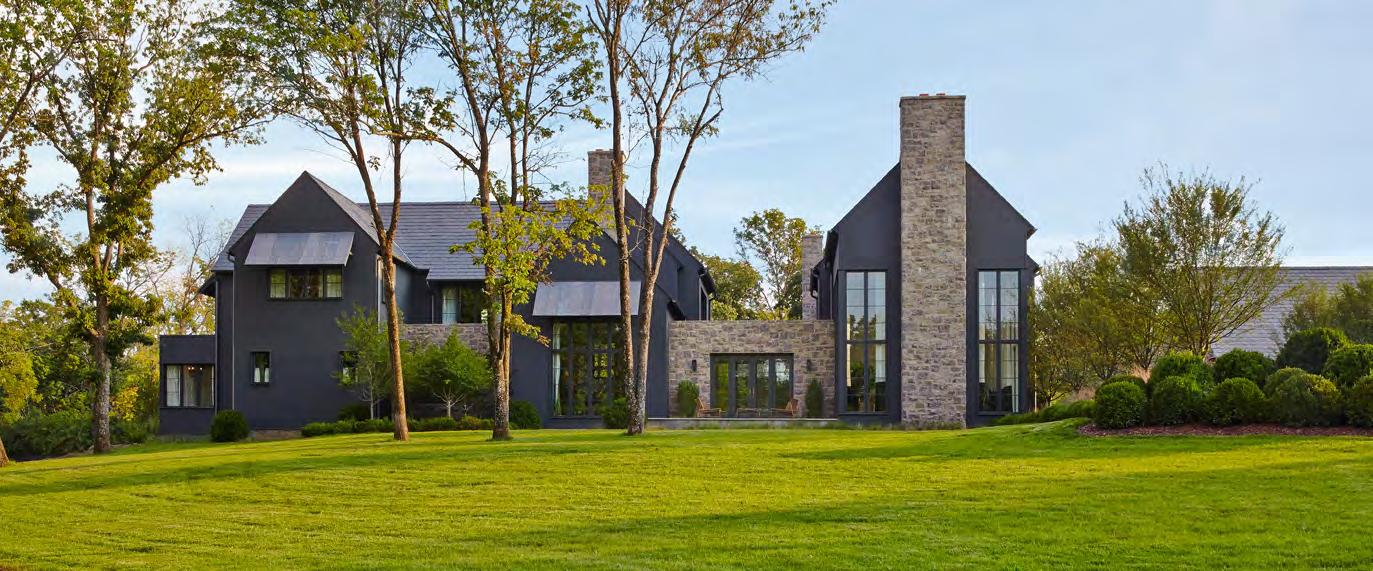














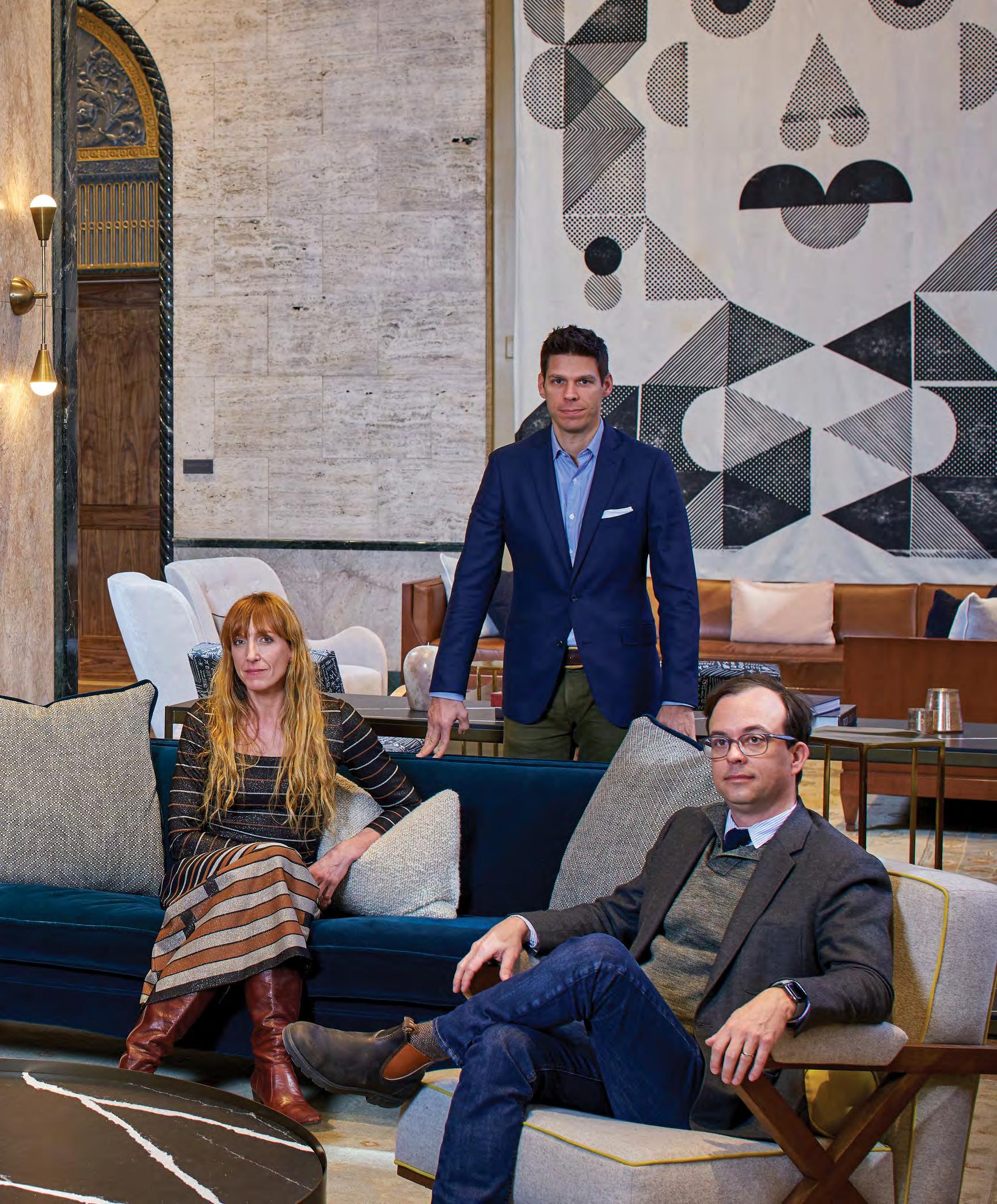
BUILDING, DESIGN AND DEVELOPMENT
THE GOLDEN AGE
NASHVILLE CREATIVES BREATHE NEW LIFE INTO FORMER NOEL PLACE HOTEL AT NOELLE
STORY BY HOLLIE DEESE
BY SANFORD MYERS
Before there was new Nashville, there was the Noel Place Hotel — an Art Deco lodging house in Printers Alley that originally opened in 1930 and has recently been reimagined as Noelle, a 224-room, 13-story boutique hotel. One of downtown Nashville’s first luxury properties, Noel Place is now owned by Rockbridge and operated by MAKEREADY, who tapped Nashville’s creative community to infuse what makes this city unique into all aspects of Noelle.
Nashville-based architects Feltus Hawkins Design and Nick Dryden of Dryden Architecture and Design (DAAD) worked with creative branding experts Peck & Company, led by Benji Peck, to preserve the building’s past while giving the hotel a sense of Nashville that could never be manufactured by someone outside the city.

Above,
Across, top, the two-story Trade Room features the original terrazzo flooring, marble and Travertine walls and columns, plaster molding, wood windows, brass air vents, and brass handrails which have all been restored.
Across, below, the Archives overlooks the Trade Room and features custom shelving from Amuneal that showcases accessories and artifacts from Noel Place’s original hotel days.
Nick Dryden is known for creating spaces where people want to be. And that is exactly how Rockbridge found him — by hanging out in Nashville and enjoying the places he helped create, and learning how he incorporated local creatives and artists into those projects.
“It was really just a result of them seeing these little seeds that we had planted over the years in Nashville, and that’s what led to us leading the design on Noelle,” he says.
Dryden knew just a little bit about the space when he signed on — that it used to be a hotel and that it was built by a local family, the Noels. He also knew it changed from a hotel to a bank to business offices. But he really dug into the history after touring the property with the developers — who were already far enough down a path with an out-of-state design company that they had model rooms ready to go.
But Dryden had no problem breaking the news that if they were trying to capture who and what Nashville was, they were all wrong. And so Dryden and crew were tasked with making it right.
“I have to give them a lot of credit because they really took a risk,” Dryden says. “I’ve never seen this actually happen before, where a developer had it within themselves to rethink and question the direction they were heading, and then literally slam the brakes and start over. To me that showed their level of authenticity, their wanting to deliver something special
— something that was truly localized to Nashville.”
That is what made Andy Mumma such a natural choice to conceptualize and manage the coffee setup, Drug Store. Creator of Barista Parlor, Mumma had worked with Dryden on the Golden Sound location of Mumma’s growing coffee-shop empire.
“I always do stuff that just pushes me, and I feel like if you build stuff to make money, or just have that in mind as your goal, then you’re not ever going to push things,” Mumma says. “And this felt like a good project for all of us to be a part of. We are all Nashvillians, and I think we work well together.”
Libby Callaway was also recruited by Dryden to bring her impeccable eye to curating the retail store, Keep Shop.
“I call him the Godfather,” she jokes.
At Keep Shop, the concentration is on local designers. There are exclusives you can only find there, like products from Clots Ceramics. Nashville designers, artists and makers contribute one-of-a-kind pieces to the 600-square-foot retail space, which also offers new and vintage clothing, accessories, media and home goods from local creative partners and national vendors.
“It becomes less about cashing in on Nashville’s coolness, trying to make it a Nashville ‘experience,’ and more about finding and celebrating the culture that’s here,” Callaway says.
Bryce McCloud was brought in early on to oversee Noelle’s art programming, which includes custommade interactive pieces designed by McCloud and executed by the team at his studio, Isle of Printing. Guest corridors feature the work of a rotating schedule of local visual artists curated by McCloud. And Little Prints, McCloud’s on-property art space and shop with a working vintage printing press, ties the current creative culture with the neighborhood’s workingclass past.
“Art’s always been an important component of the city,” McCloud says. “It’s easy for the music side to overshadow it, but in a way, I don’t think that’s been a bad thing. It’s made the artists that come and work in Nashville kind of spunky.”
McCloud curated a portrait series for the hotel, Nashvillians of Merit, with commissioned portraits of Nashvillians in every room. In the two-story Trade Room a collaborative installation was put in place, with many pieces making one amazing local face. The notable Nashvillian there? McCloud’s own mom, a representation of the support behind all creative people.
“She was a high school teacher. She lived a quiet but
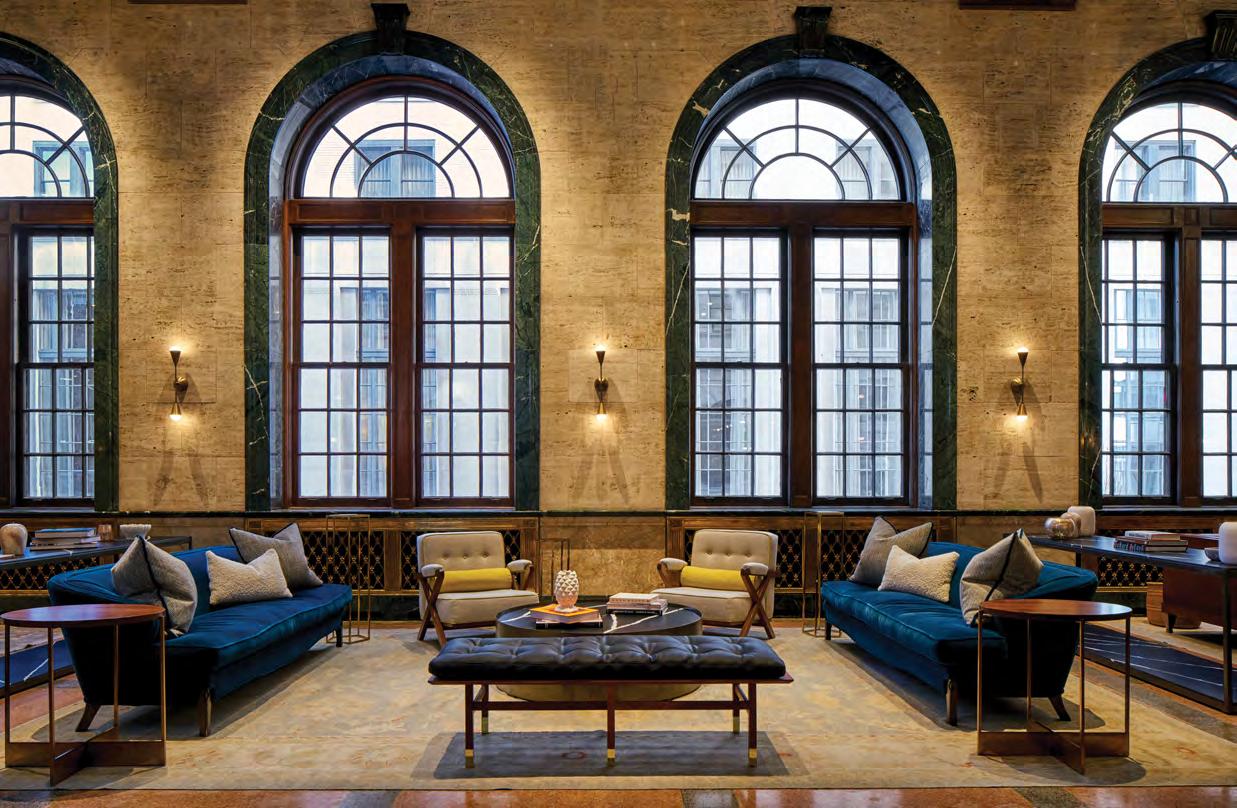

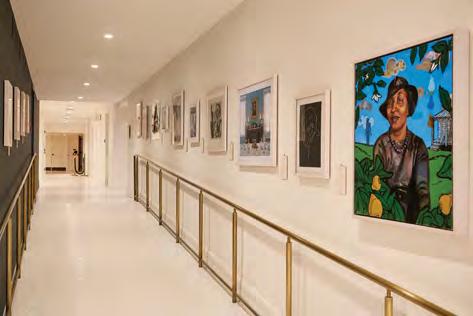

Bryce McCloud was brought in early on to oversee Noelle’s art programming. Guest corridors feature the work of a rotating schedule of local visual artists curated by McCloud.
Downstairs in the restaurant
MAKEREADY Libations & Liberation, banquettes are upholstered in Moore & Giles leather by Kings Commercial Interiors, and the millwork was done by Tate Ornamental in White House.
Across, the seating at Drug Store, Mumma’s coffee shop, was designed and fabricated by Steric Design, and the lights are from Southern Lights Electric.
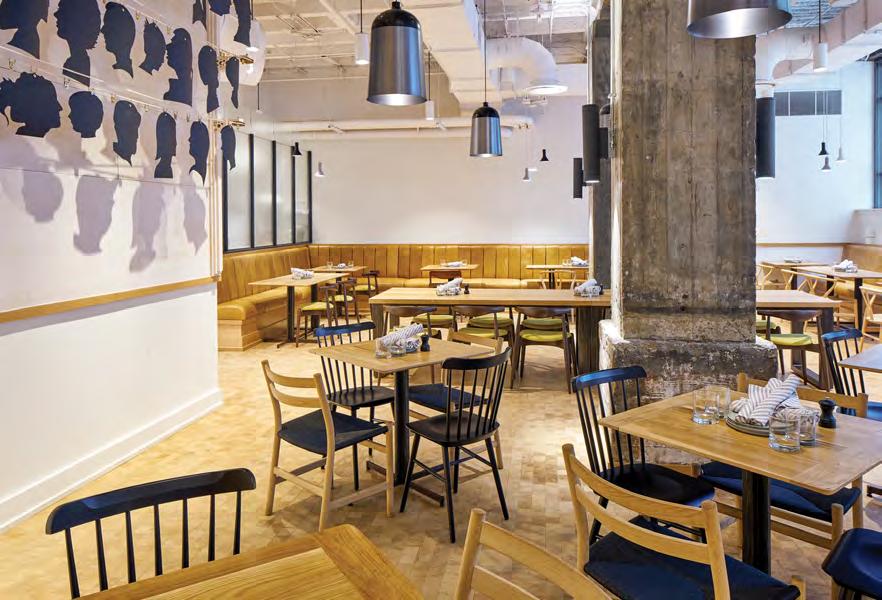
impactful life to the people around her and her school and in her community,” he says. “But that is Nashville to me. That’s what makes it great. And so while there’s a specificity to me, there are a lot of moms who believe in their kids. That belief led them to take risks and do things, and that’s how we all got to where we’re at.”
Original terrazzo flooring and marble walls have been restored, along with the original elevators, mail drop and water fountain. Other enhancing custom pieces were created, like the library table with integral lighting by Holler Design, bar with walnut millwork by Tate Ornamental, brass LED chandeliers by Michael Anastassiades, custom brass tables by KG Custom Creations and wall sconces by Apparatus on original marble columns.
“There is obviously a sense of history there, but it’s
very much Nashville now, Nashville 2018,” Dryden says.
Vintage furniture was restored and reupholstered by Willow Branch Upholstery, and the original windows have been brought back to life. And new continues to meet old in the guest suites, with hickory hardwood floors throughout, custom ceiling detail and millwork designed by DAAD and built by Hartert Russell, and custom leather chairs by Emil Erwin. On the 12th floor, there are four similar but unique penthouse apartments with built-in kitchens and vintage accessories.
Peck and Dryden had worked together on a few other projects in the past, and it was important to them to do something very significantly and truly Nashville — what Nashville is and what Nashville’s becoming, not just what Nashville has been stereotyped as in the past.
“That inspiration really kicked us off to approach this
“ONE OF THE THINGS THAT IS TRUE ABOUT NASHVILLE AND THE PEOPLE OF NASHVILLE IS THAT WE HAVE THIS DESIRE TO NOT BE TOLD WHAT WE CAN OR CAN’T DO.” – BENJI PECK

project as understanding our own city in a way that I didn’t maybe even approach it before,” Peck says. “Really understanding, really getting down to the whole idea of what the spirit of the city is, and the spirit of the people, and what the people are like. That creative spirit inside of them — that desire and will to do things, even in the midst of adversity. One of the things that is true about Nashville and the people of Nashville is that we have this desire to not be told what we can or can’t do.”
That’s where the hotel’s symbol of the blue heron came from, a surly but beautiful bird native to the area that is a bit awkward and gangly but incredibly majestic when it flies.
“Nashville is a town of wild animals and lovely people,” Peck says. “We have all these people that are collaborative, giving, caring and want to help out
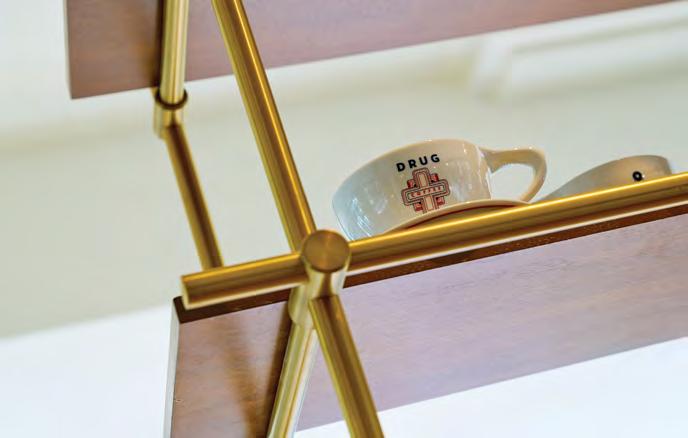
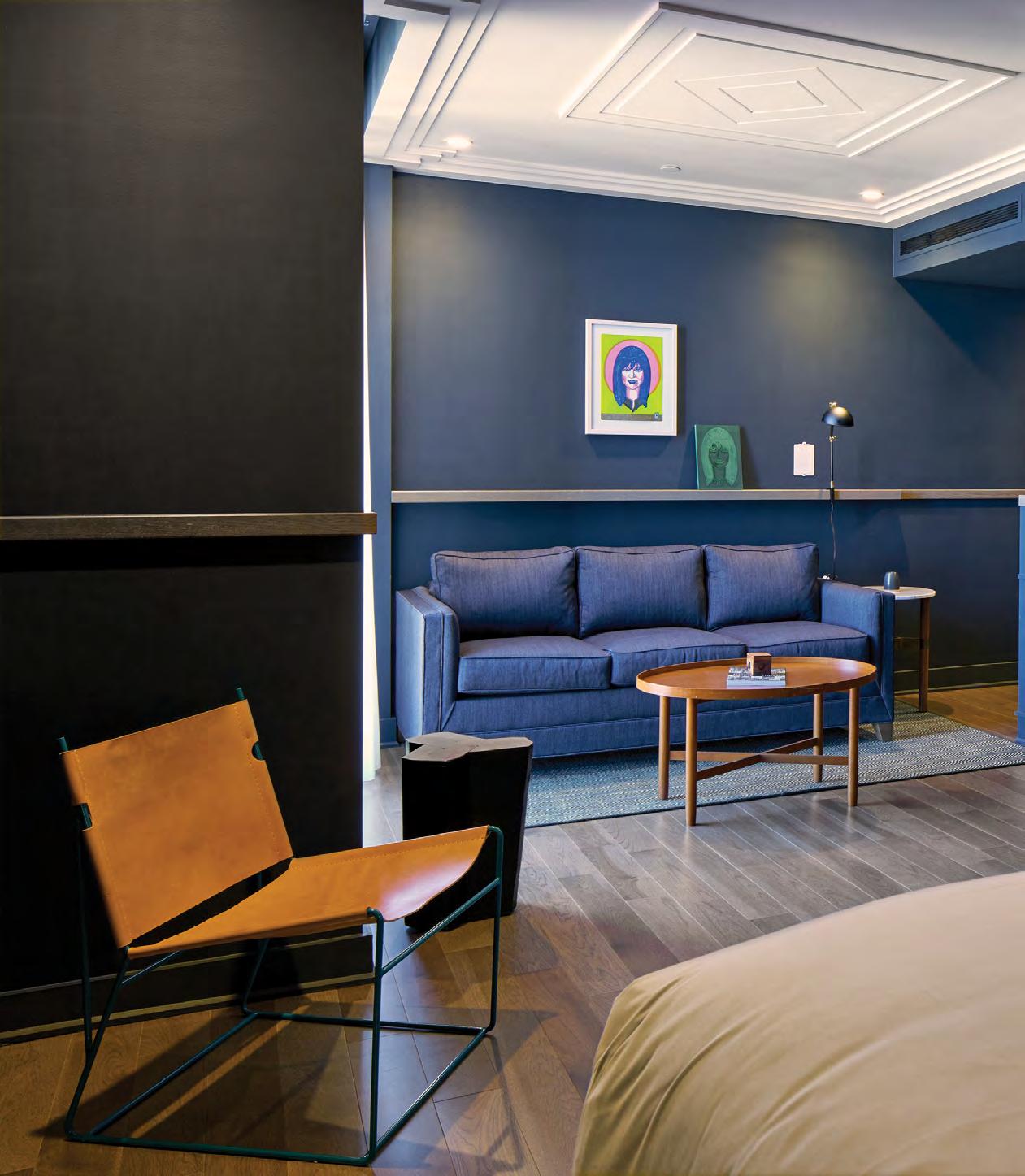

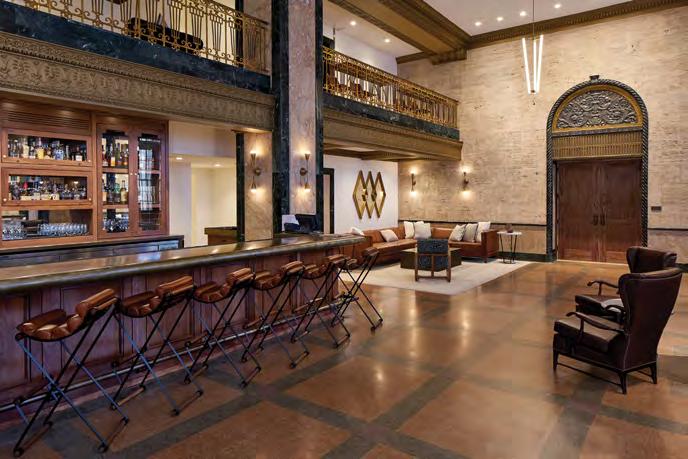
everyone else. It really is a city full of great and lovely people, when you get to know them. At the same time, we all kind of have that feisty spirit inside that makes us want to prove ourselves. It’s truly who we are.”
General Manager Shannon Foster has been with other hotels and says she’s never seen one so truly immersed in the community the way Noelle is.
“I’ve worked at hotels where we’ve had an art program with local artists, or where we’d sell local coffee, but nothing to the extent that we’re doing it here,” Foster says. “And what is truly different about this property, in addition to having those local partnerships, is the locals really recognizing that and appreciating that. We see a lot of locals gravitating to Noelle because of how unique the experience is here.”
And now that rooftop bar Rare Bird is open, expect even more local love of the view of the downtown skyline that includes the Cumberland River, Nissan Stadium and the Shelby Street Bridge. The fireplaces flanking the ends of the patio make it perfect for cozy group seating.
“I believe that our industry is about connecting with guests, and about having people leave feeling they really experienced a city, that they learned something special about that city vs. coming in and experiencing what a night at a hotel might have to offer,” says MAKEREADY Chief Operating Officer Christine Magrann. “We look to hire people within the city that truly understand what we are doing. That want to provide a really authentic guest service experience, allowing the guests to understand the artisans of this city. I think it is pretty fantastic, and people walk away really learning about the special history about that building or the people that are contributing many years of their life to making this city better.” NI

An original water fountain was restored.


They are the nicest, most knowledgeable, helping and hard-working group. This builder exemplifies excellence from the craftsmanship to the professional staff. Wonderful experience! Our project was completed ahead of schedule and under budget. They were meticulous in their work and their desire to please us as clients exceeded our expectations. PRETTY PICTURES ARE NICE BUT IT’S WHAT OUR CLIENTS SAY THAT MATTERS MOST.

DSTORY BY HOLLIE DEESE PHOTOGRAPHY BY RACHEL TENPENNY
FINISHING TOUCH
The old front door just did not fit in.
“It was a really traditional door,” says designer Melissa Frederickson of Atmosphere 360.
“When we flipped the whole interior to supercontemporary modern, it was an eyesore. We painted it and hoped it would go away.”
It didn’t.
After living with it a bit, Dr. Fesik was ready to make the exterior upgrade. He had the brick painted a fresh, light gray with dramatic black accents and added a slate roof. Then it certainly didn’t seem right to modernize everything else and leave visitors’ first impression of his home mired in the past.
“He decided to order the front door,” Frederickson says.
Pella’s Architect Series Contemporary appealed because of its narrow lines and contemporary hardware, and the exteriors could be made black while the interior was custom-matched white with sleek chrome hardware and foldaway cranks. Plus, they are all made to showcase beautifully unobstructed views, balancing exposure to the outside while improving energy efficiency — another plus, since Dr. Fesik’s old doors were letting cold air in through the cracks.
r. Stephen Fesik took the interior of his decades-old, traditional Forest Hills house and transformed it into a clean-lined modern masterpiece. His style upgrade made his home the kind of place worthy of showing off, so next up was making it a hub of entertaining. The back patio and pool got new decking, and he added a bar and pool house with bathrooms.
Things still were not complete; everything was fresh and modern, all the way to the new back doors from Pella’s Architect Series Contemporary.
The result is an expansive finishing touch on Dr. Fesik’s contemporary remodel, replacing heavy wood with a custom-all glass option from Pella’s Architect Series Contemporary. It matched the windows and back patio doors, and it also accommodated the existing sidelights and curved transom. For privacy, Dr. Fesik can lower a large-scale commercial shade at night with the push of a button.
“The wooden door kind of closed up the room. We didn’t even realize how much until he got rid of it,” Frederickson says. “Now he has a clear view during the day. There also was a lack of light in the living room because he’s in the woods — so it was nice to open that up and show off the great view of the trees across the street.” NI




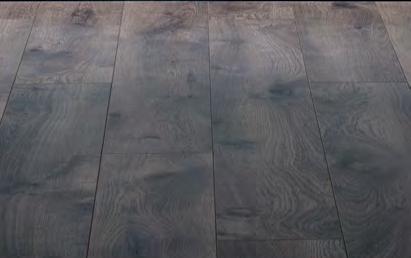




As the most trusted custom home builder in Nashville, Williamson County and Middle Tennessee, we create your dream house by making every home a castle.


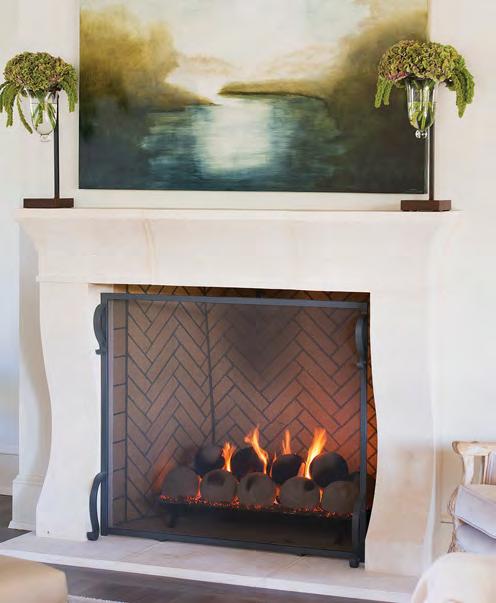


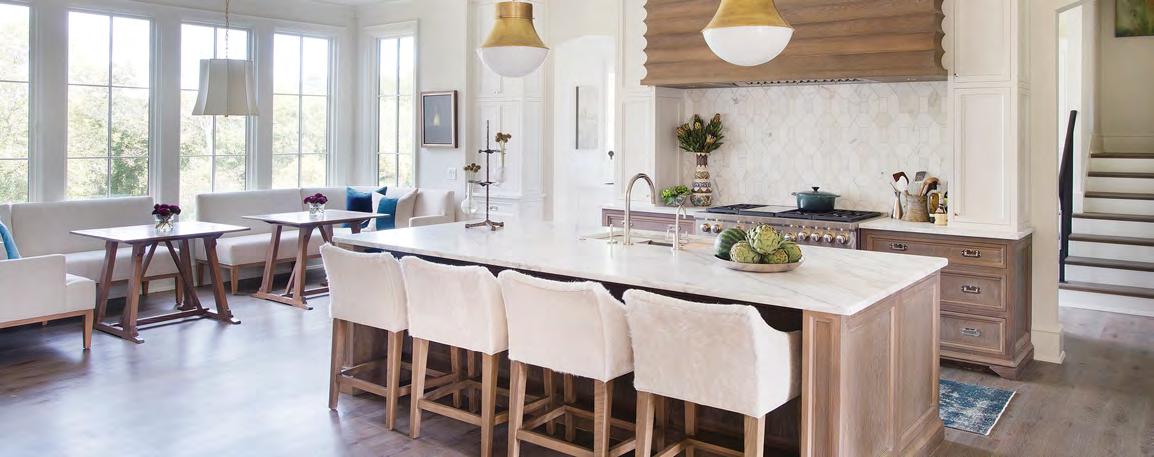


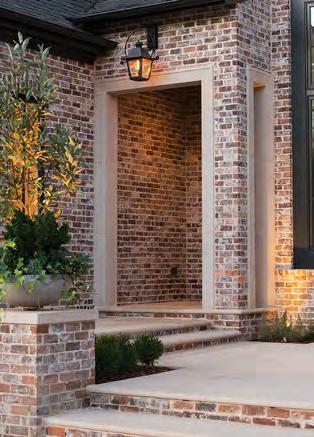
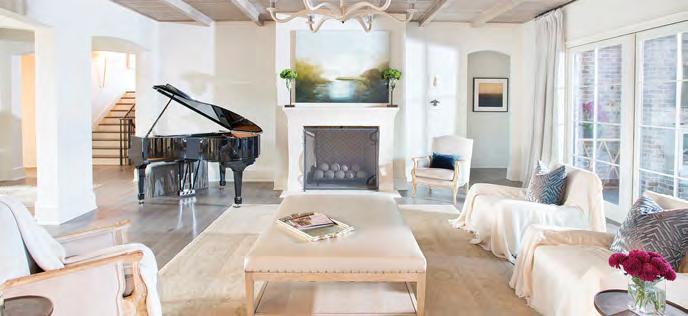
ARTCLECTIC INSPIRATION
ENHANCE COLLECTION AT ANNUAL ART SHOW
As an alumna of the University School of Nashville, designer McLean Barbieri knows firsthand the quality of the education it provides. The private school’s mission of diversity, creativity, environmentalism and inclusive learning is why she sends her children there.
And as the owner and principal designer of Annali Interiors, Barbieri is a fan of Artclectic, USN’s annual fundraiser that features a diverse assortment of about 50 juried exhibitors. Over the years, the annual fundraiser has evolved into a nationally respected and accessible art show with a wide mix of mediums, styles and price points.
This year Barbieri is co-chair of the 22nd annual event, which is Oct. 18-20. Along with Erica Jacobs and Michelle Rosen, she is committed to assembling a varied selection of artists and pieces.
“Art tastes are personal, and so what one person thinks is really great, someone else may think is really not,” she says. “We obviously look at what has sold well in the past and try to get a balance of medium and style so that we can appeal to as many people’s art tastes as possible — while still offering high-quality, mostly regional, art,” she says.
Barbieri has bought at least seven pieces at Artclectic, starting before her children were even enrolled at USN.
“When you purchase a piece of art, you expect to want to live with it for a long time in your home,” she says.
“It’s not a light decision for people.
“We really try to provide the tools for people coming to Artclectic to be able to shop how they like: If they’re impulsive. If they want to look at all of the artists online beforehand. If they want to commission a piece after the show. All of that is within the boundaries of Artclectic.”
Attracting thousands of visitors, the show provides valuable art education for USN students and the Nashville community through demonstrations, class

STORY BY HOLLIE DEESE
PHOTOGRAPHY BY PATRICK SHEEHAN
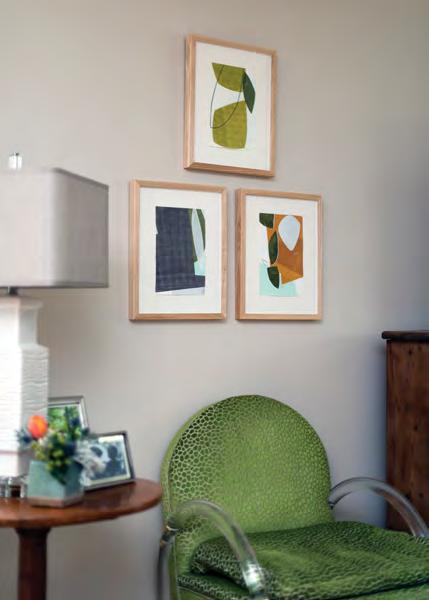

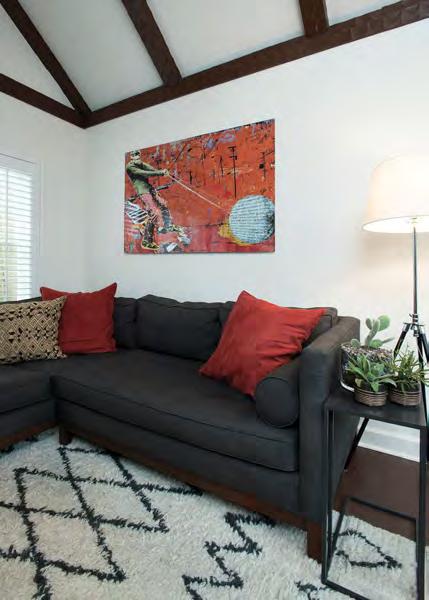
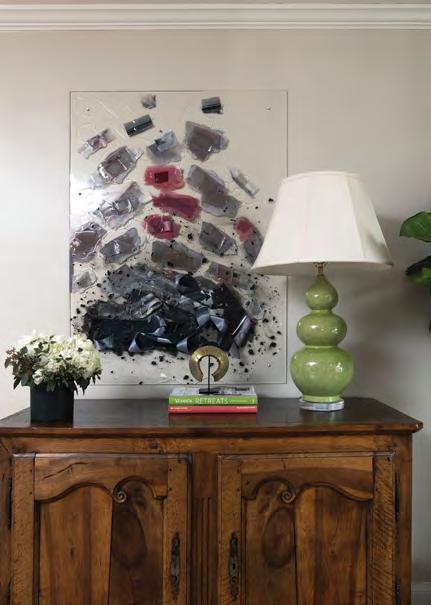
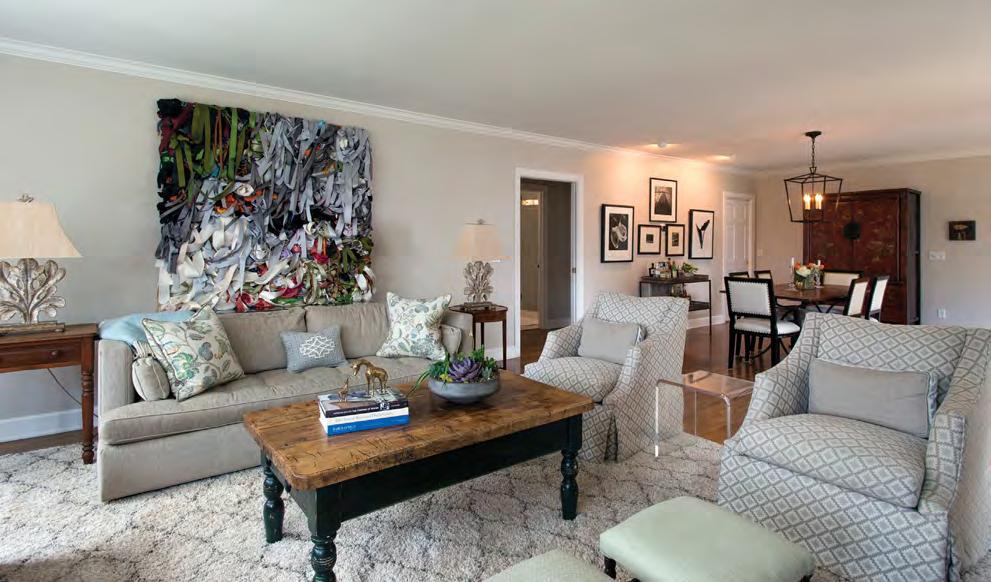


tours and hands-on workshops. Proceeds from the event are earmarked for the Artclectic Endowment Fund for Innovative Teaching, which supports curriculum innovation and classroom excellence.
“The money goes to teacher development; it allows them to have the opportunities to push the envelope on what kinds of ideas they want to bring to the classroom,” Barbieri says.
Because all the artists are on hand to talk about their pieces, Artclectic is an ideal place to shop for art. People can discuss multiple items that catch their eye with artists who are ready to engage and answer questions.
“You really end up having a very personal feeling with
the art itself,” Barbieri says.
Of course, if there is a specific empty wall or corner you are looking to finally fill, it’s okay to come with measurements, paint swatches and hopefully an open mind. If you are lucky, the artist might have just the right thing stashed nearby.
“I think people come with one set notion and then allow it to be a little bit fluid,” Barbieri says. “I do have the philosophy that you have to react, and you have to love it. Artclectic gives such a vast selection of art at one place that it allows you to see what you like, to see what draws you in.
“It’s all about the personal experience with the piece.” NI
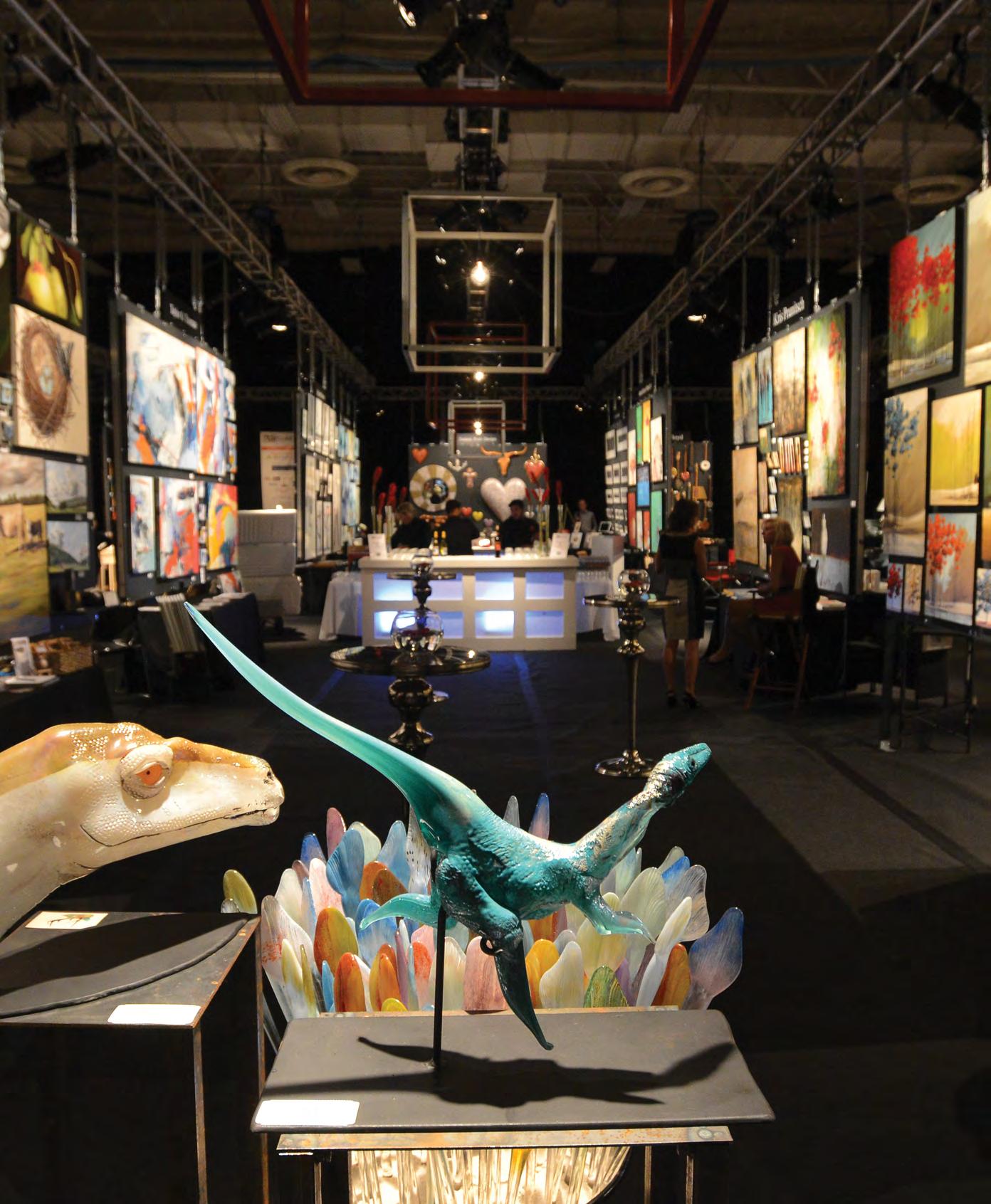
Artist Spotlight JIM SHERRADEN
STORY BY HOLLIE DEESE | PHOTOGRAPHY BY CONNIE CHORNUK
hen Jim Sherraden moved to Nashville in 1977, it was because his lyric writing skills had caught the attention of Waylon Jennings.
“When they called, I left the phone hanging in the air like a cartoon character,” he jokes.
But along with his way with words he brought a way with letters and printmaking to Music City. Add in his appreciation for history, and
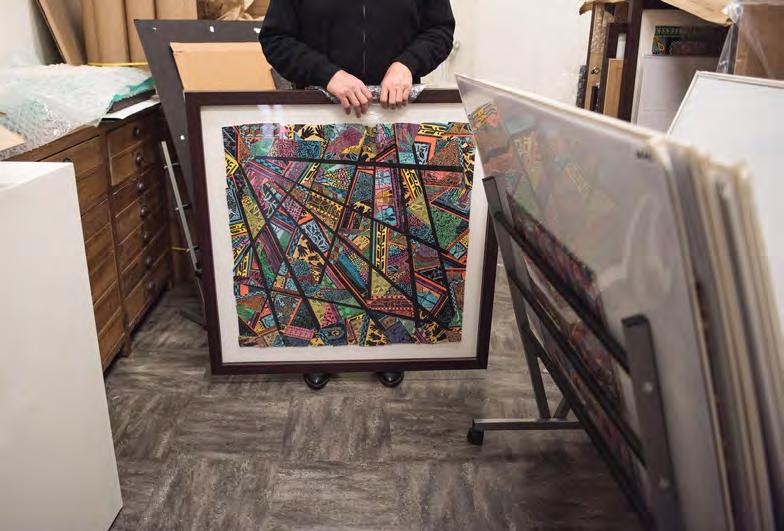
Sherraden was a natural fit to manage Hatch Show Print when the job came open in 1984.
It ended up being a perfect pairing. Over the next 30 years, Sherraden revived the graphic design institution, which flourished under his decades of care. That was no small feat in a time when letterpress was dying and people were paying for radio ads over posters.
“The wood just seemed to be lined with dust, so I wanted to bring them back to life,” he says.
During his time with Hatch, not only did he start the line of restrike prints celebrating the print shop’s rich advertising history, but he started
creating his own pieces of art based on that original archive.
His monoprints would take this block and that block from Hatch’s archive and turn them into compositions that had never been done before.
Think combining an animal from a 1933 barnyard series with the background from a print made for a soda brand out of Jackson.
And after tipping his hat to the history of Hatch for three decades, Sherraden took what he learned there to create something entirely new.
“I realized that I could start cutting my own blocks again and creating an individual piece of art based on all of the information that I received while making countless posters for everybody from Bruce Springsteen to B.B. King,” he says.
“When I left the post at Hatch as manager and started working upstairs in archives, I continued creating my own pieces of art.”
In 2005 he began cutting his own woodblocks again. He made his first wooden quilt in 2008, when local cabinetmaker and friend Ian Hartert of Hartert-Russell gave him thousands of woodblocks left over from a project.
“I looked at these blocks for a half a year, and then rather sheepishly thought I would cut my own artwork up and mount them on top of the wood blocks and create a multi-dimensional wooden quilt,” he says.
As a result of that process, he had what is known in quilting as “that which falls to the floor.” But what to do with the beautiful scraps?
“I kept looking at all these pieces, and then a friend asked for some of the ‘fish bones’ and I began to wonder what I was missing,” he says.
“That is how I started.”
His colorful quit patterns are sometimes traditional, like Attic Window or Baby Block, and some are more free-form “crazy quilt” patterns. While it’s hard not to associate Sherraden with the two decades of mixed monoprint making he
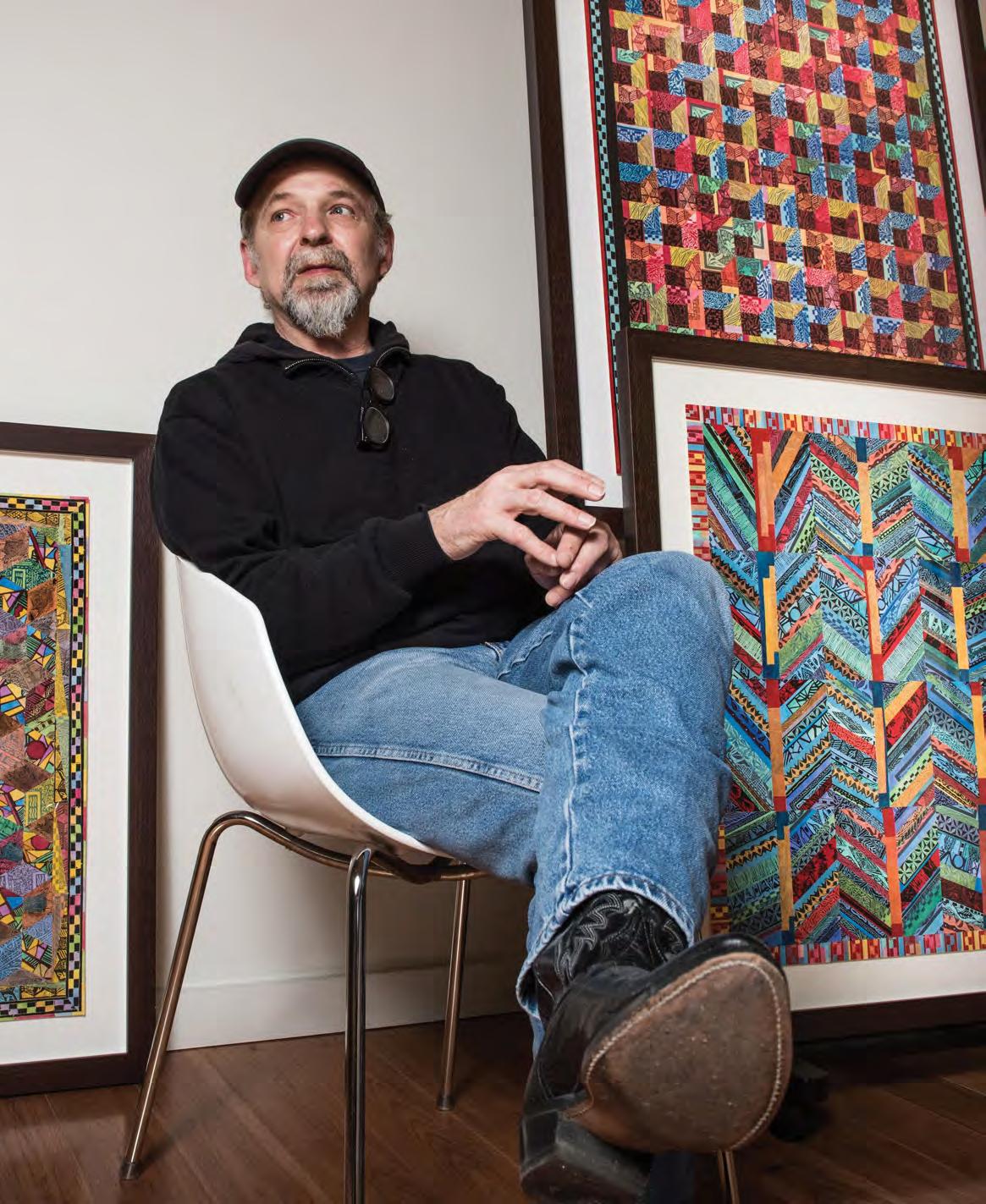

did at Hatch, that’s okay. All of that work at the letterpress is what led him to where he is now: Because it’s standard in a print shop to cut up a proof, it was much easier for Sherraden to take one of his own beautiful prints and start cutting.
“Everything that I did at Hatch as a printmaker led me to this,” he says. “When you cut up posters for 30 years, it’s not a stretch to cut your own artwork up — keeping in mind the larger picture.”

Let award-winning guidebook authors and veteran travelers
and
craft an itinerary for your dream trip to Ireland or Italy.
Little Roads Europe specializes in affordable, small-town, off-the-beaten track driving itineraries, immersing travelers into the culture, the food, and the history of the places we visit.
Today he works a few days a week archiving the Hatch history and has yet to barely even touch the ’20s, ’30s and ’40s. He spends the rest of his time working on his art and studying the tradition of quilting.
“Quilting is a worldwide, recognized way of keeping warm and a way of making artwork,” he says. “A woman named Margaret Shapiro said that even though they were considered folk art pieces, they will stand up with any Picasso piece with the skill and the precision that was put into them.”
And there is more to come.
“I have what I call the ‘under-the-bed’ collection, and maybe one day we will show those,” he says. “For the time being I appreciate the printmakers before me and all those quilters who gave me the opportunity to slow down and create these pieces of art. And I’ve just gotten started.” NI
Jim Sherraden is showing his wooden and paper quilts at Hatch Show Print’s The Haley Gallery, 224 Fifth Ave. S., Aug. 4-Sept. 30, 2018.
Curated Small-Town European Experiences


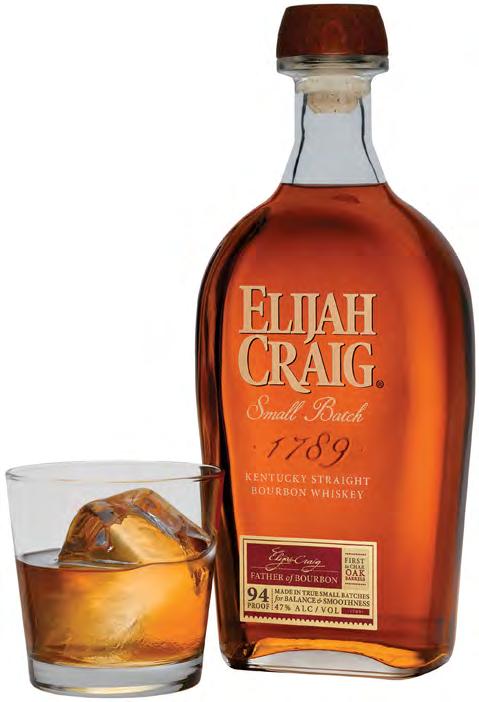





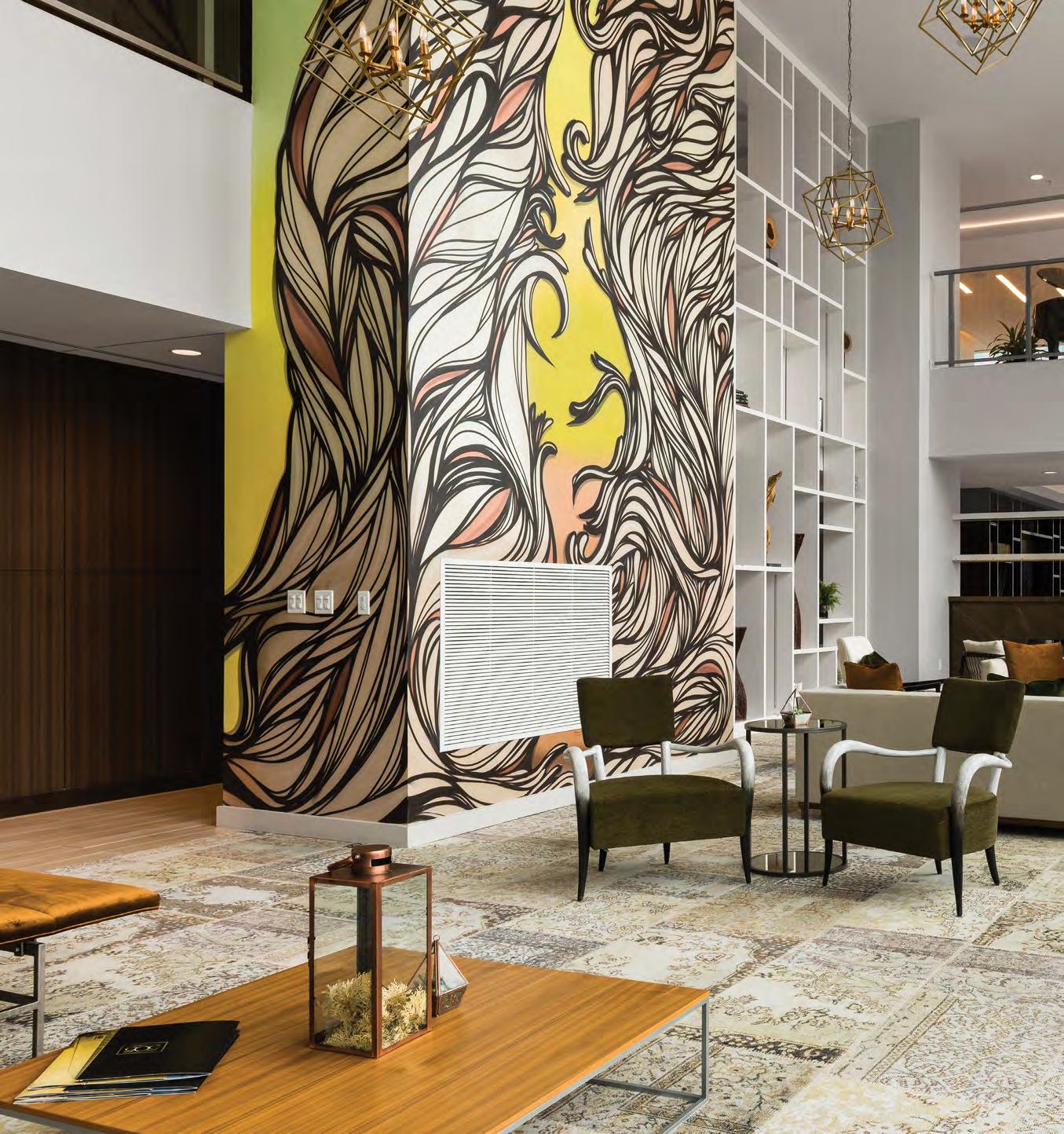
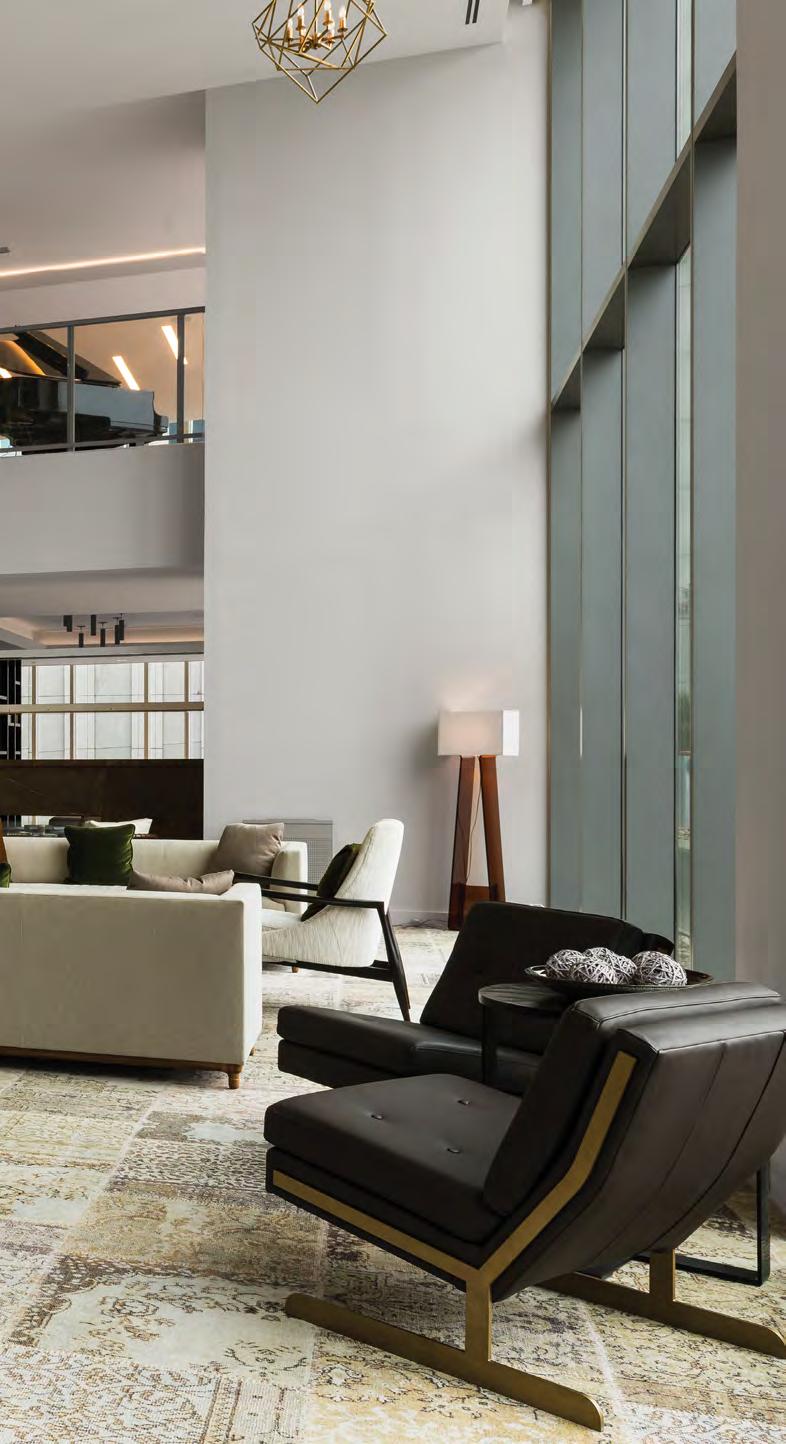
GRAFFITI GOES INSIDE
LOCAL STREET ARTISTS GO BIG, AND GO HOME
STORY BY HOLLIE DEESE TROY DUFF PHOTOGRAPHY BY REEVES SMITH
NATE BROWN AND BRYAN DEESE PHOTOGRAPHY BY GABE FORD
THREE HILLSBORO HIGH SCHOOL ALUMS ARE MAKING NAMES FOR THEMSELVES DOING GRAFFITI MURALS, AND MORE RECENTLY, INTERIOR COMMISSIONS.
TTROY DUFF
roy Duff’s first graffiti name was Basic, back in the late ’80s. “I didn’t really have a style yet,” he says of the early days. “I was still learning, just roaming the neighborhood tagging ‘Basic’ everywhere.”
He has been a full-time artist for the past four years, painting as Krest
One. The former clothing designer admits his success, and the popularity of street art in general, is a bit unexpected — especially in Nashville. “I never thought that it would be a full-time career for me in my late 40s,” he says.
Duff, 46, recently collaborated with Keith Urban on a yet-to-be announced project that puts his art front and center, and he also just finished a project for singer Kelsea Ballerini. He’s doing more and more interior projects; the latest is large-scale canvases at Woolworth on 5th, a
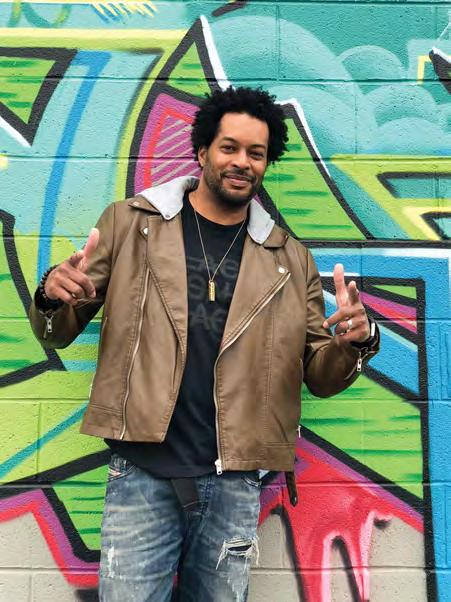


location where his mother participated in civil rights sit-ins decades ago.
One collector of Duff’s work has been amassing art for more than 50 years, and he wanted something distinctive for his Green Hills-area condo — something that could knock the socks off the Belle Meade crowd.
“I’m a bit of a rebel, I have to admit,” says the collector, who wishes to remain anonymous.
So he commissioned Duff to paint a graphic letter mural, “Yikes,” and he certainly got the reaction he was looking for.
“They just stand and drop their arms and look,” he says. “They don’t know what to say. They don’t want to be offensive, because most of my friends have never seen graffiti in domesticated areas, much less in a person’s home.”
He then hired Duff to come back and try a totally different style, what Duff calls calligraffiti.

“He did it freehand as he painted, and it is unbelievable,” the collector says. “It’s just thrilling to look at.”
Duff says working inside is a totally different process, even if the graphics are the same, simply because even when you get past the cramped quarters it’s so unexpected to see a large wall mural — or even a wall application in general — indoors.
“People expect to see paintings outside on the building. That’s nothing new. But when people come into someone’s home and they walk into a room, they don’t expect to see a large-scale mural on the wall. It takes people by surprise. And I love that,” Duff says. “I love that shock factor of surprising people.”
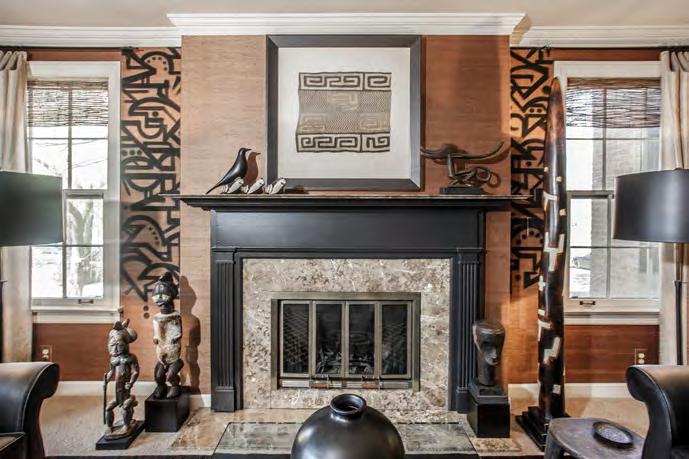
BRYAN DEESE
B
ryan Deese, 43, got into graffiti through some kids in a summer school class at Hillsboro High School when he was 16. He had goofed off a little bit with spray paint in the garage on some skateboard ramps, but that summer he went out by himself to prove to these other kids that he could.
“Coming from Nashville, I had always been influenced early on by artists like Red Grooms and Myles Maillie and Norris Hall,” Deese says. “They painted really big and kind of cartoonish and fun, with bright colors and a black outline. So I’d already been attracted to that. And graffiti had all those same elements, with a little bit of fun and adventure along with it, out in the streets. And as a young kid, that’s what you’re looking to do, just go exploring and have fun.”
Deese, husband of Nashville Interiors publisher Hollie Deese, had always associated the word “starving” with artist, so he went down the graphic design route, But the demand for spray-painted murals picked up about five years ago, and he transitioned to art full time after working at Bonnaroo for the festival’s 10-year anniversary.
“It was me and two buddies. We hired on 15 assistants and painted linear miles of temporary walls at Bonnaroo,” he says. “Then, one of my favorite street artists, Steve Powers, was hired to do the same gig two years later. It let me see I’m on a plane with some of my favorites, and that also gave me the motivation, like maybe I could do this.”
He is just getting back into exploring canvas work after major gigs for the Country Music Hall of Fame and Nashville Urban Winery, including literal off-the-wall elements that bring just the right amount of street-art edge to fine-art applications.
“The last five years I’ve just been more excited about painting on the streets. Now I’m taking some stuff I’ve done on the streets and doing some fun, new experiments with it.”
As for the current near-hysteria over street art in Nashville, Deese isn’t necessarily surprised since he’s been in on the slow rise of acceptance. But a younger version of himself might have been shocked.
“To earn a living as an artist is hard,” he says. “It’s not easy, and you’re really putting yourself out there for rejection and disappointment. And I think when you’re looking for emerging artists, you have to be excited about that artist and their story. You’re going to end up becoming their champion and telling their story a lot. My story’s real. I’m not trying to be anything I’m not. And visually I think it looks really good.”

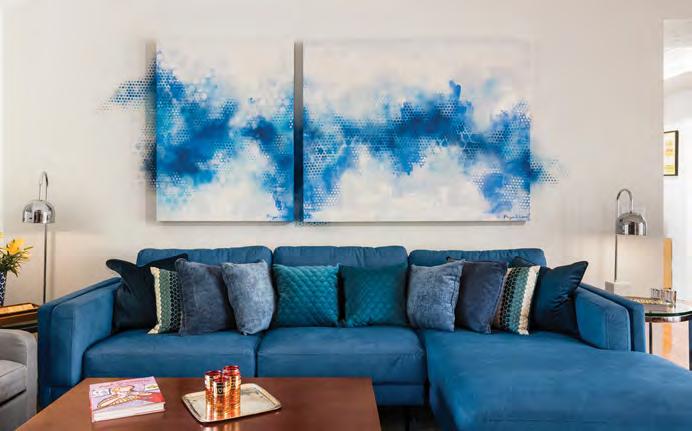


W
NATE BROWN
hen Nate Brown, 40, walked into The 505, Nashville’s newest, tallest building, to work on a two-story mural between the seventh and eighth floors, he had to admit it was a pretty amazing and somewhat intimidating experience.
“I got to see firsthand all that goes into building a structure like that, doing my little art while these people are just drilling, hammering away and moving beams,” he says. “I just wanted to stay out of everybody’s way.”
His large-scale mural created for Tony Giarratana’s latest project is just one of many gigs he has gotten since he came back to Nashville, striking the commission’s right chord of bringing something off the street inside without being too edgy.

“An interior commission, especially a multi-million-dollar development, you have to cater to quite a few different people, and I totally get that,” Brown says. “So I think we’ve done a good balance.”
Brown first moved to Nashville from


LA when he was 11, and he says one of Bryan Deese’s pieces was the first he saw, under a train bridge in the early ’90s. By age 15 he was doing graffiti pieces too.
As a sponsored skateboarder, Brown got to travel and would see public art on the streets of whatever city he was in. And he’s glad to see Nashville embrace now what he saw elsewhere years ago.
“You see the benefit of it, what it does to a community, a neighborhood,” he says. “It brings people together and gets people to interact and take photos in front of it. Also, depending on the mural, it could tell a story that they’ve never heard and educate people from out of town. I mean there’s so many things that something simple as a mural does.”
Brown does a lot of color-gradient murals, inspired by his travels, including a parking garage off Elliston where he finished a geometric piece with a number of other artists who were hired to contribute.
“I really love helping transform the city,” Brown says. “I quit a job where I was a marketing director, working for huge entertainment company, and my own street marketing company and am just painting graffiti and street art again. At 40 years old, when I was fully advanced in my career, I quit all that to pursue art. And it’s far more fulfilling. A million times more fulfilling.”
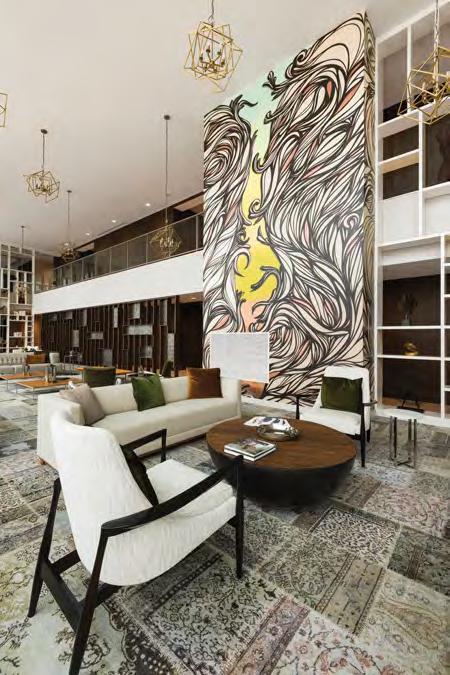


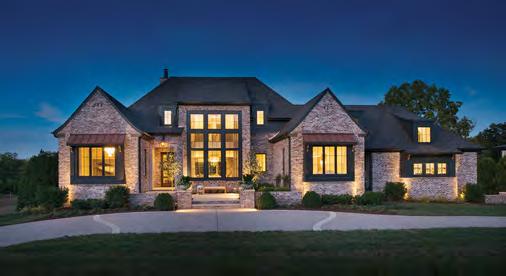
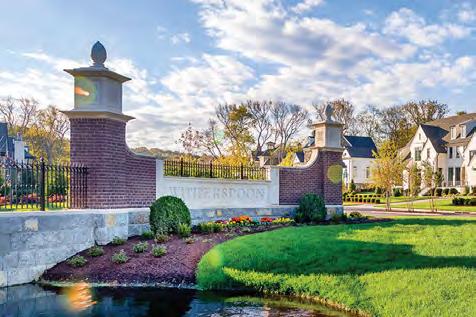
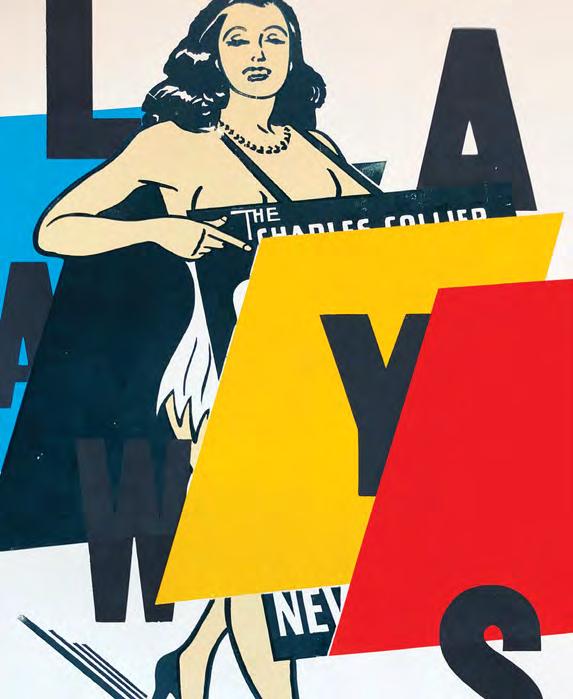



UPCOMING GALLERY SHOWS
MARCH 3 – APRIL 1 Devin Goebel
APRIL 7 – MAY 27 Todd Herzberg
JUNE 2 – JULY 29 Sonnenzimmer
AUGUST 4 – SEPTEMBER 30 Jim Sherraden OCTOBER 6 – NOVEMBER 11 Wayne White NOVEMBER 17 – JANUARY 6, 2019 Moonlightin’
